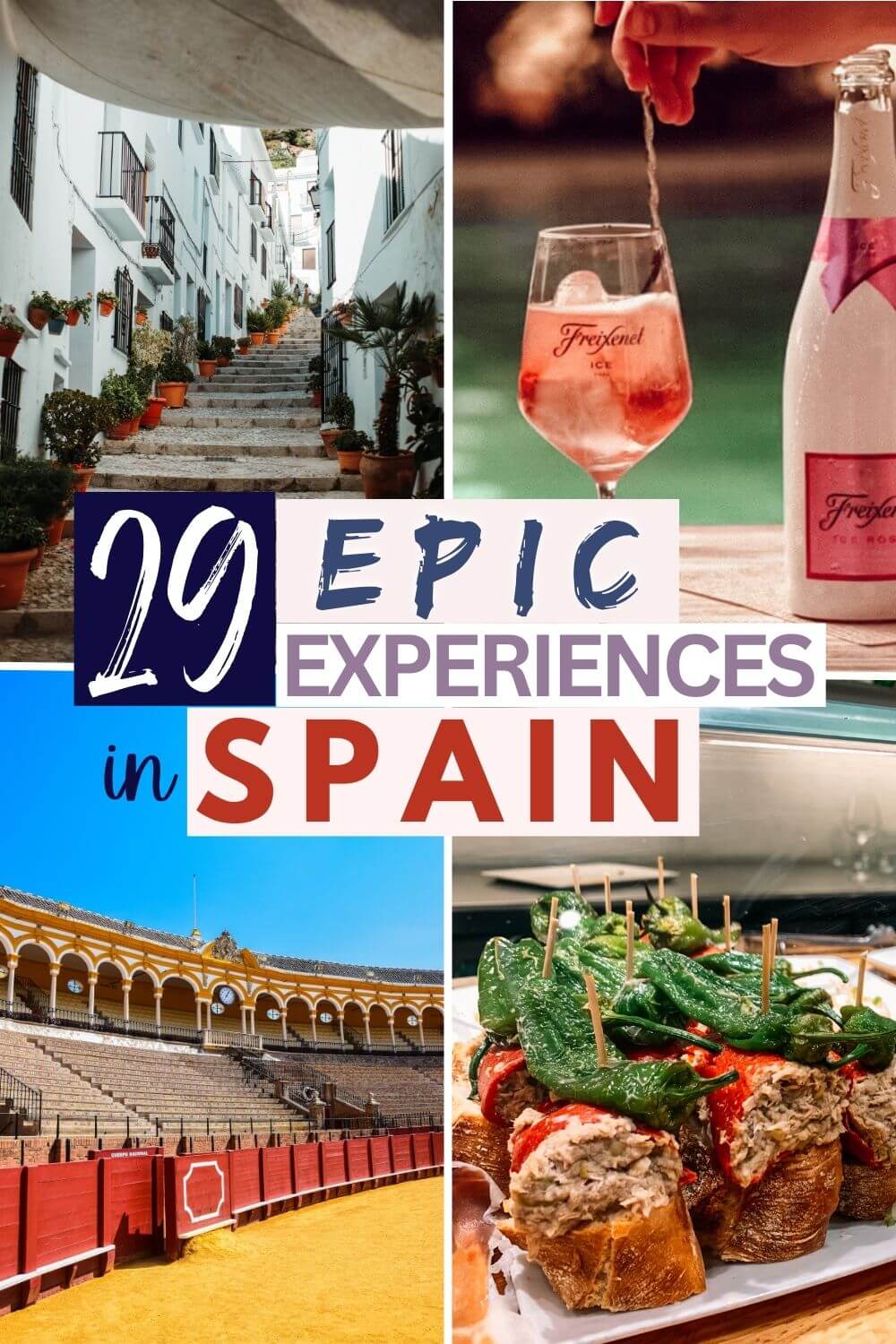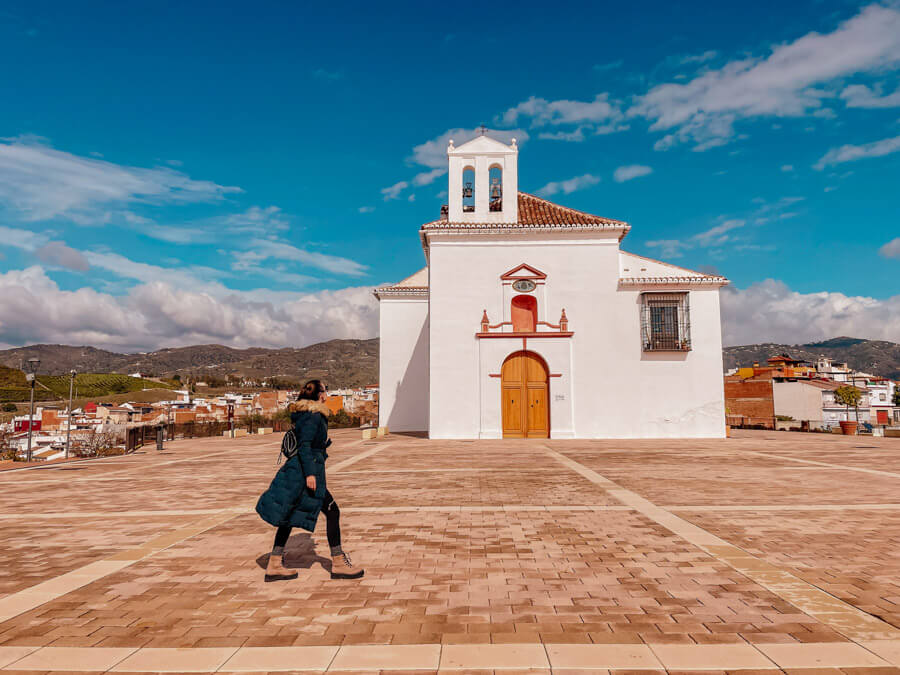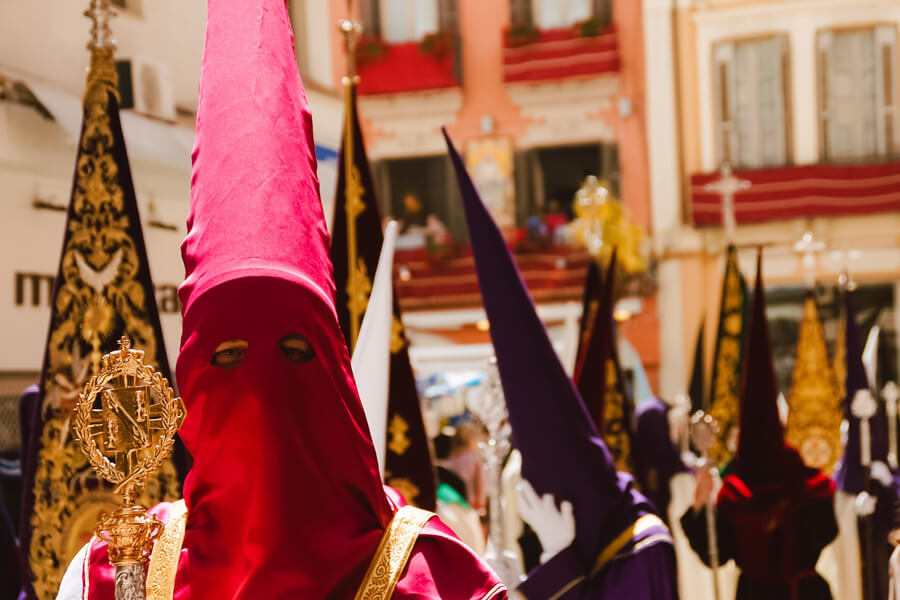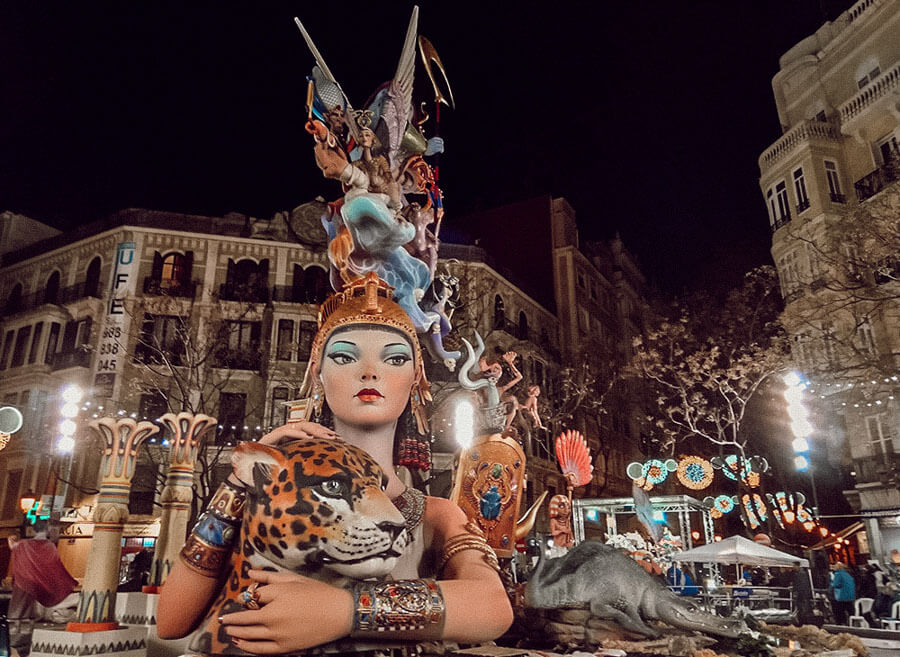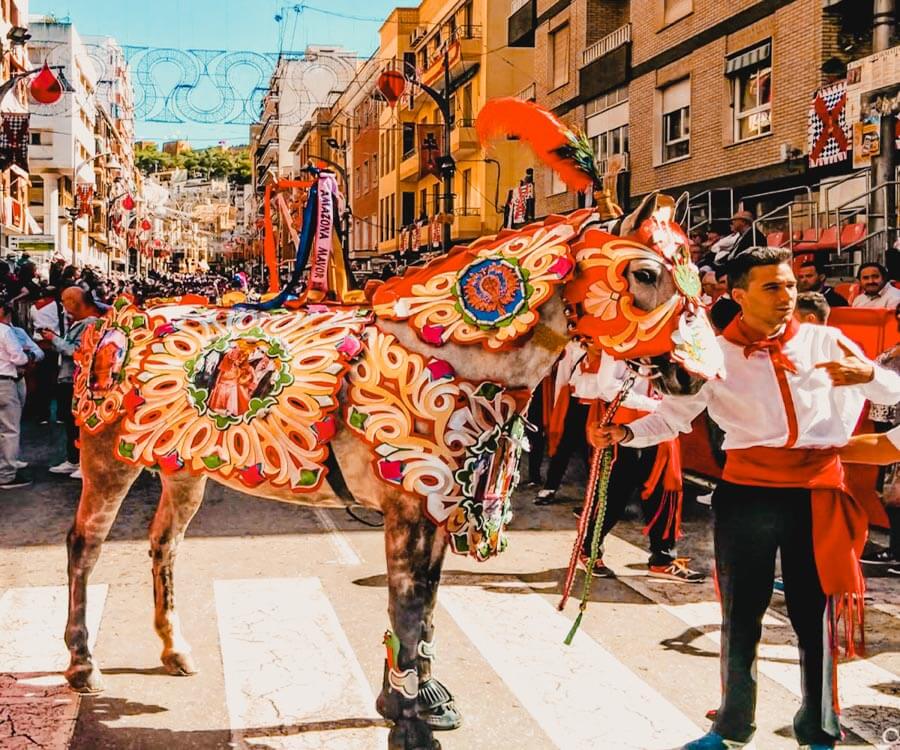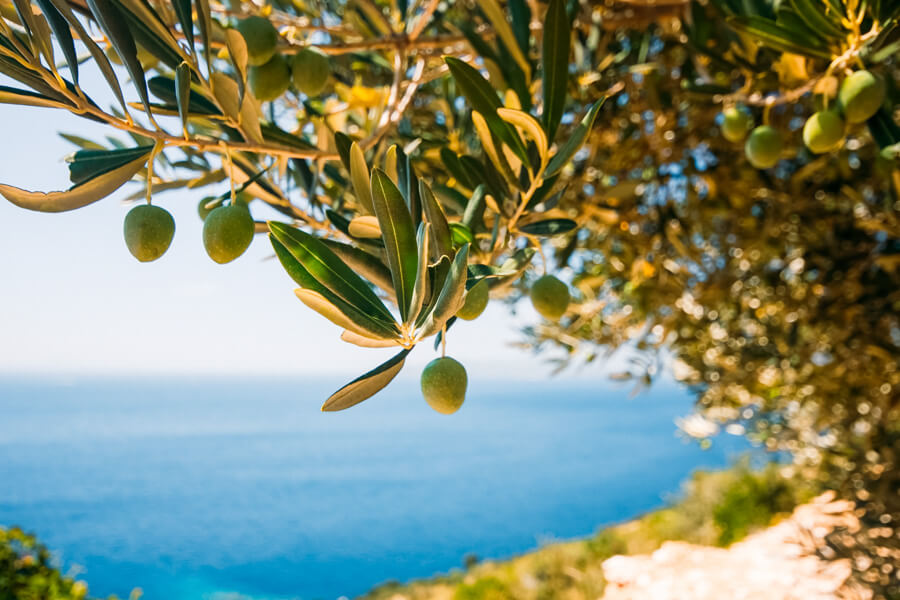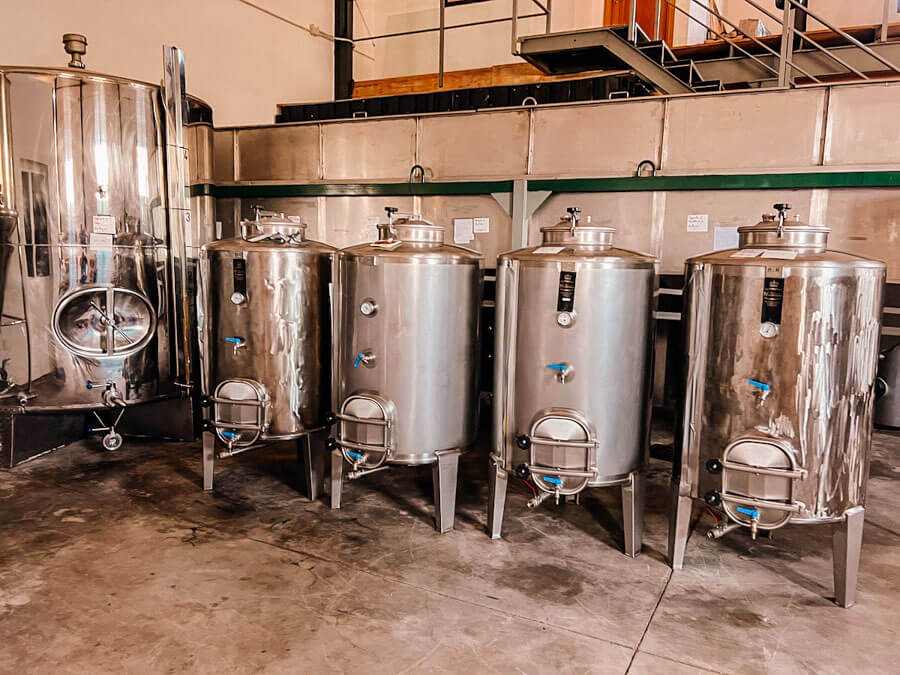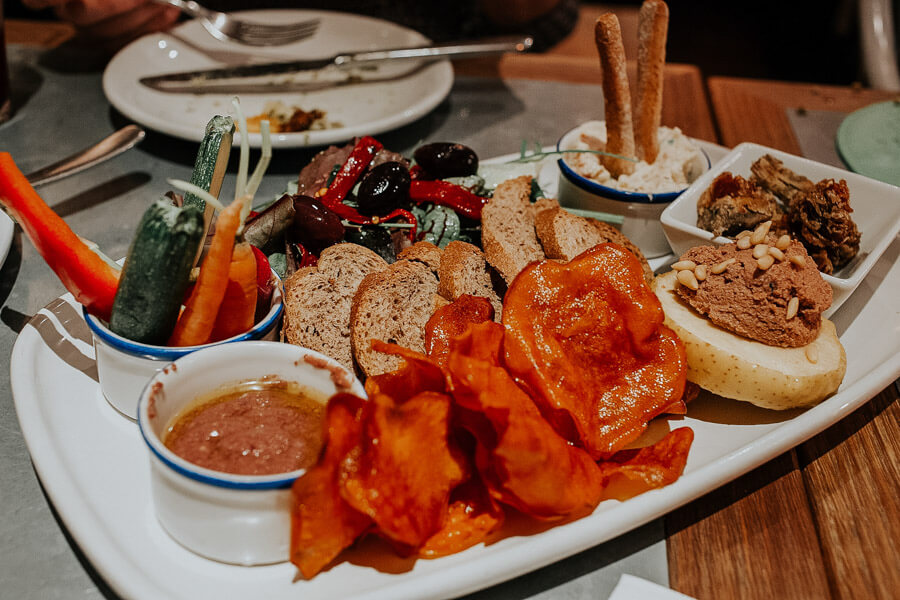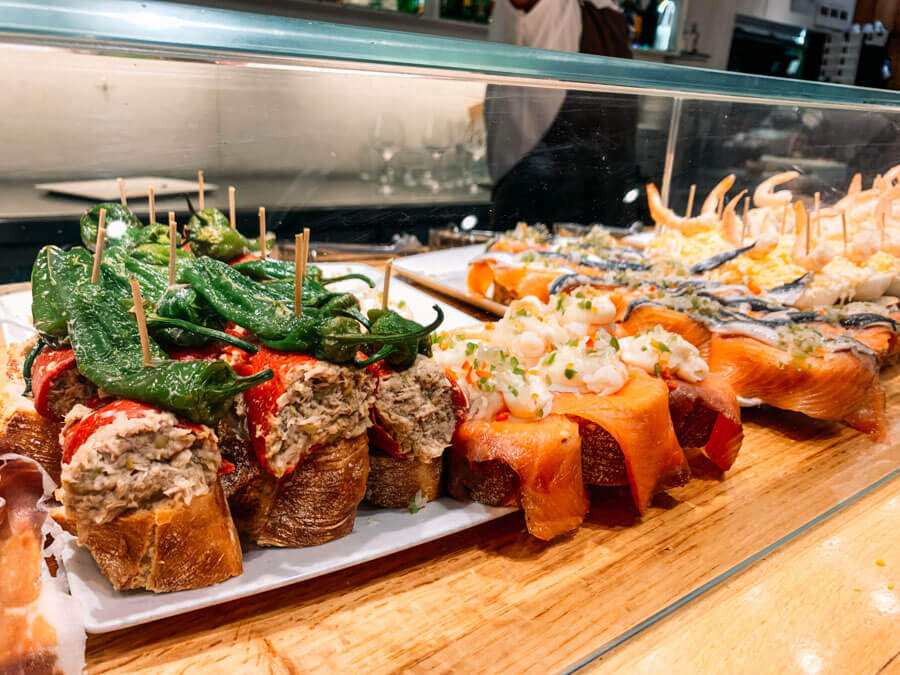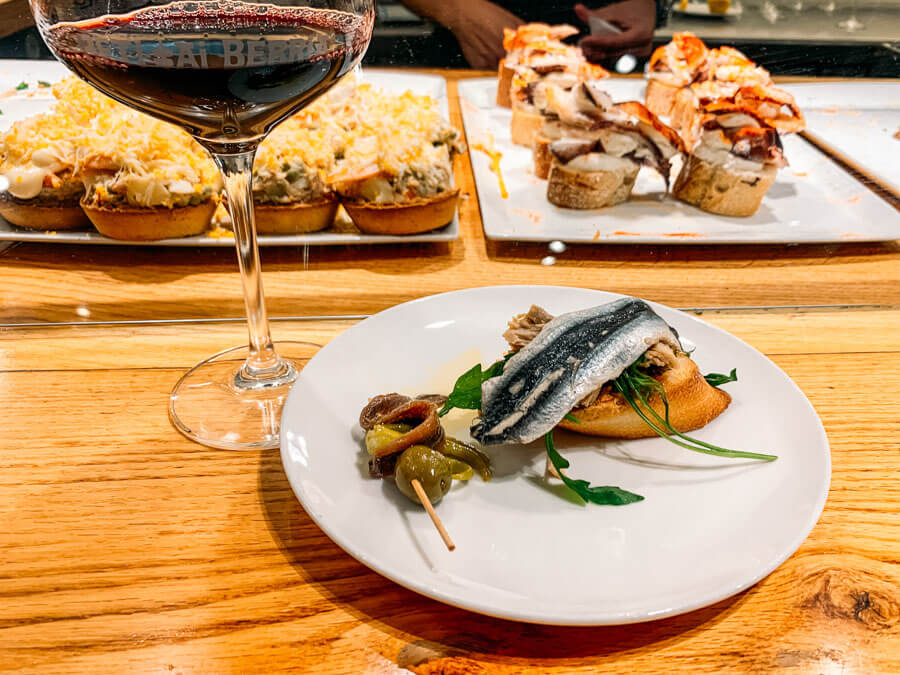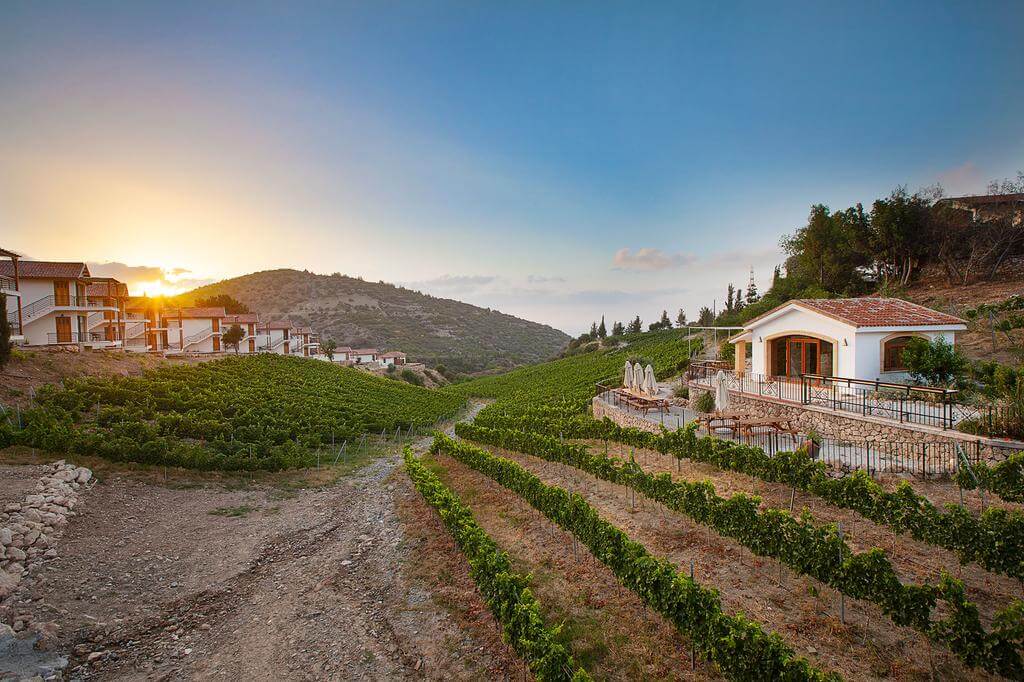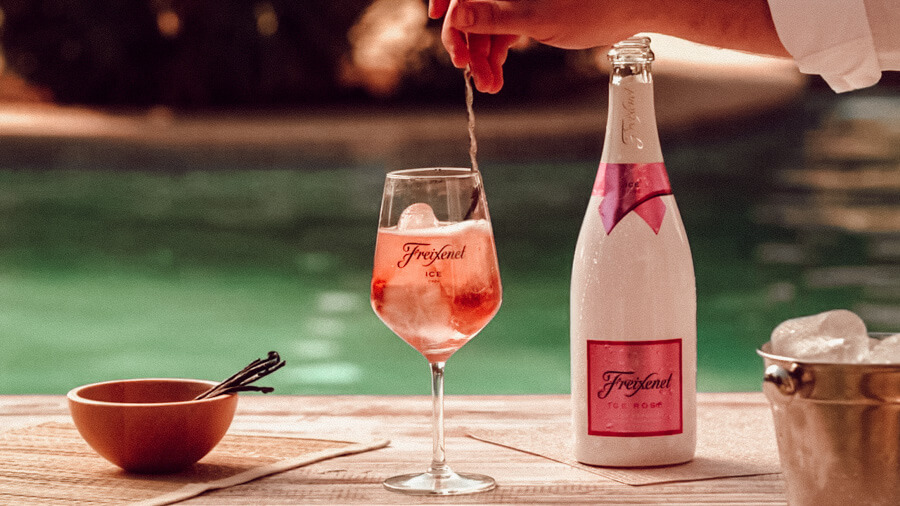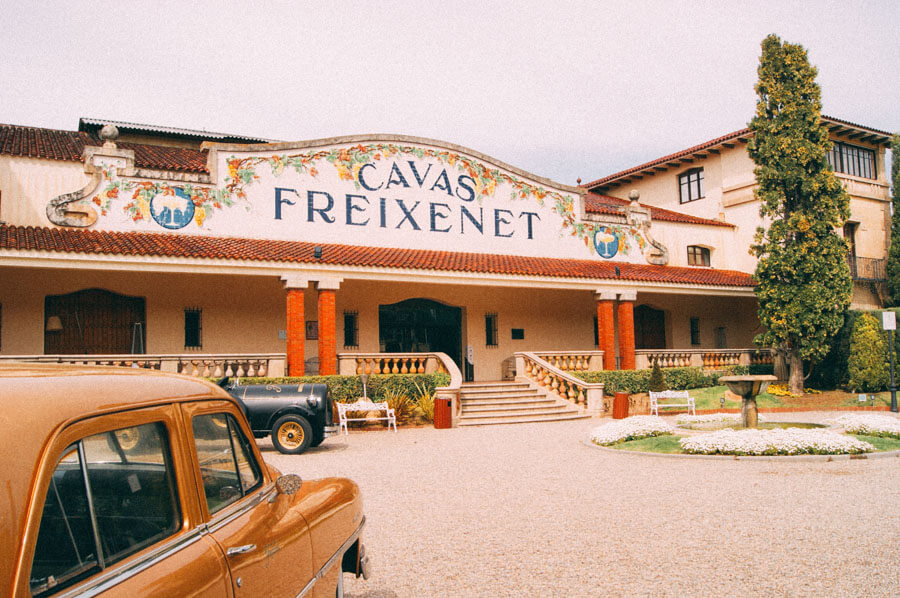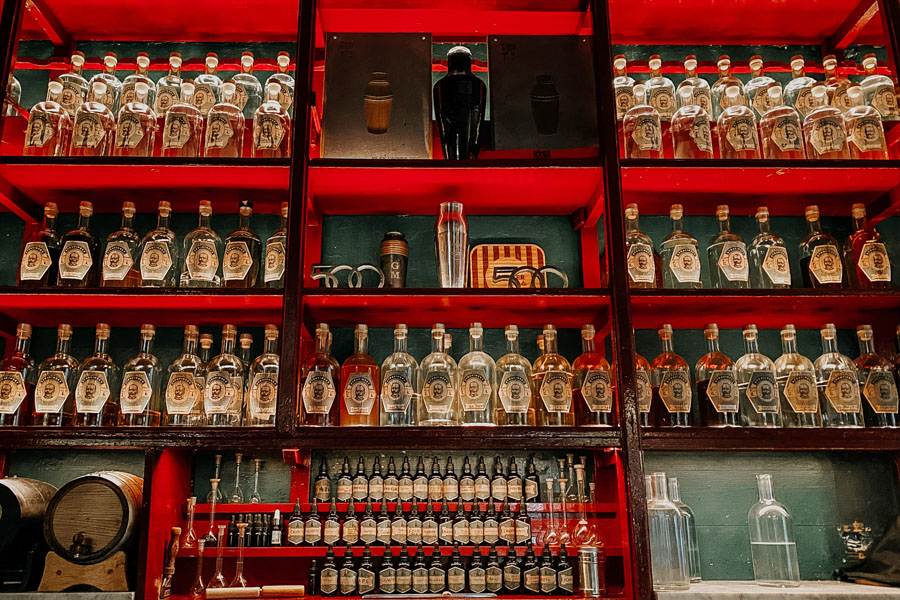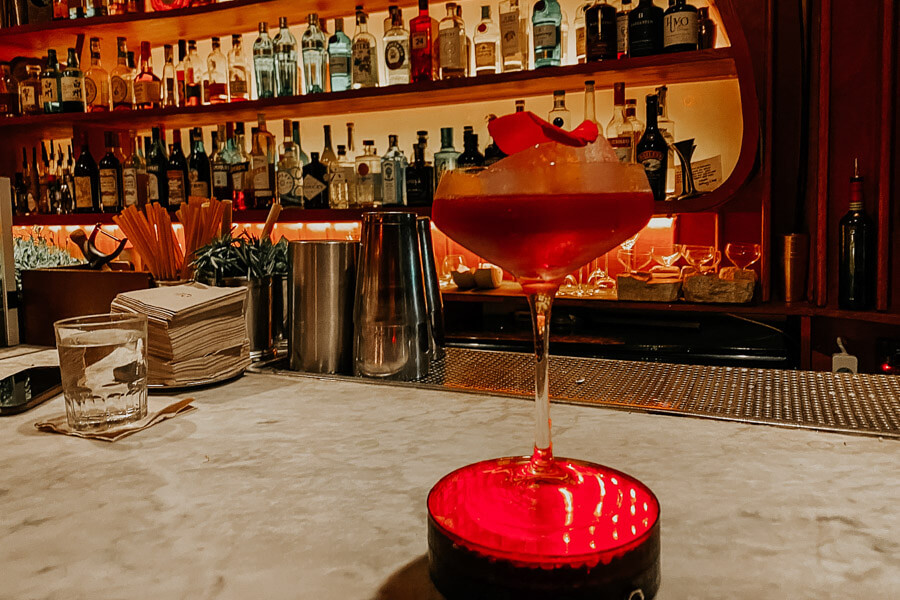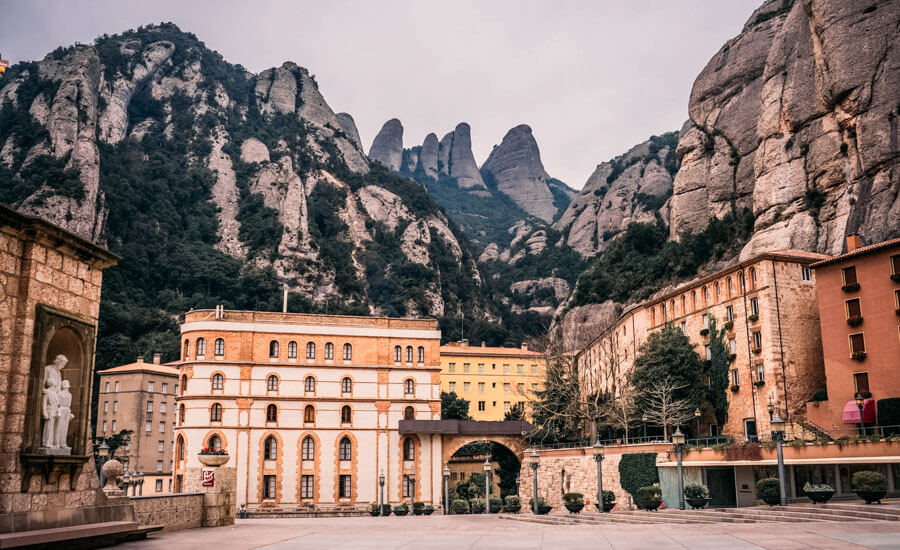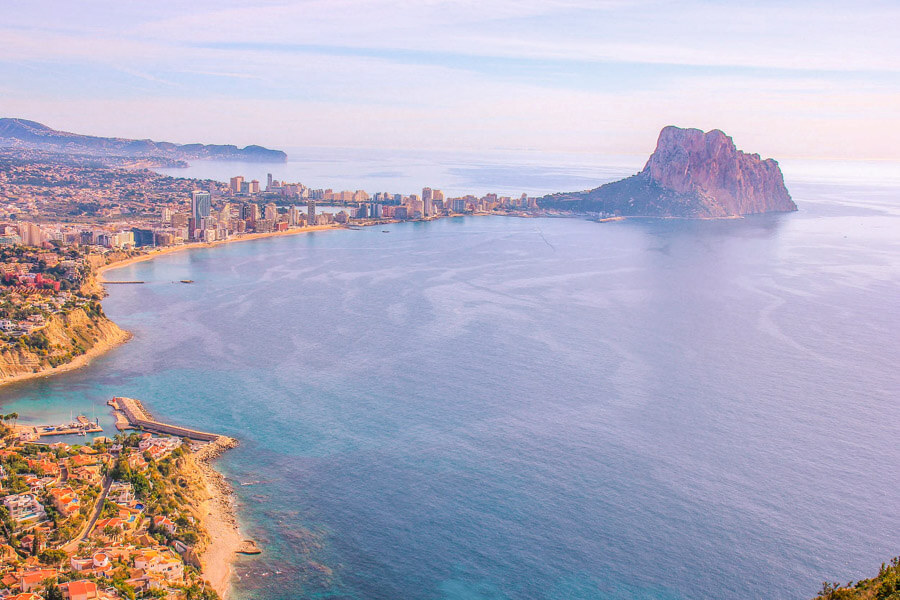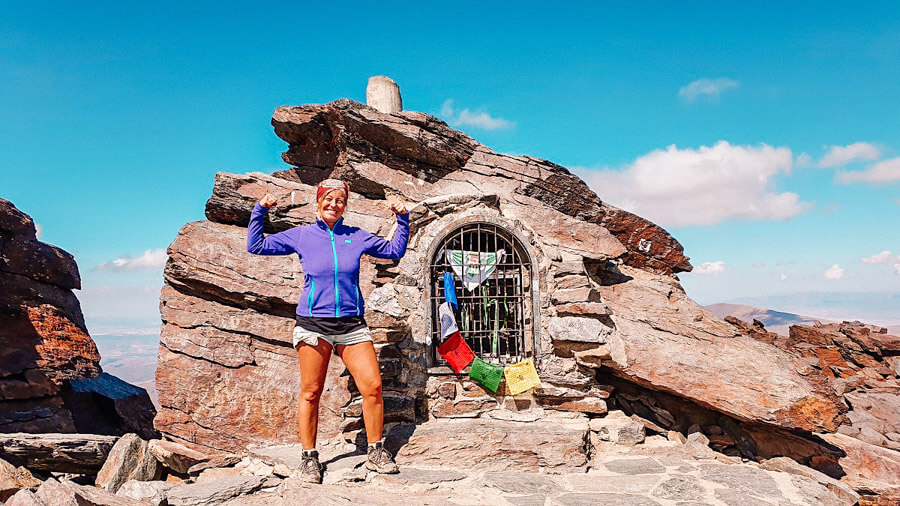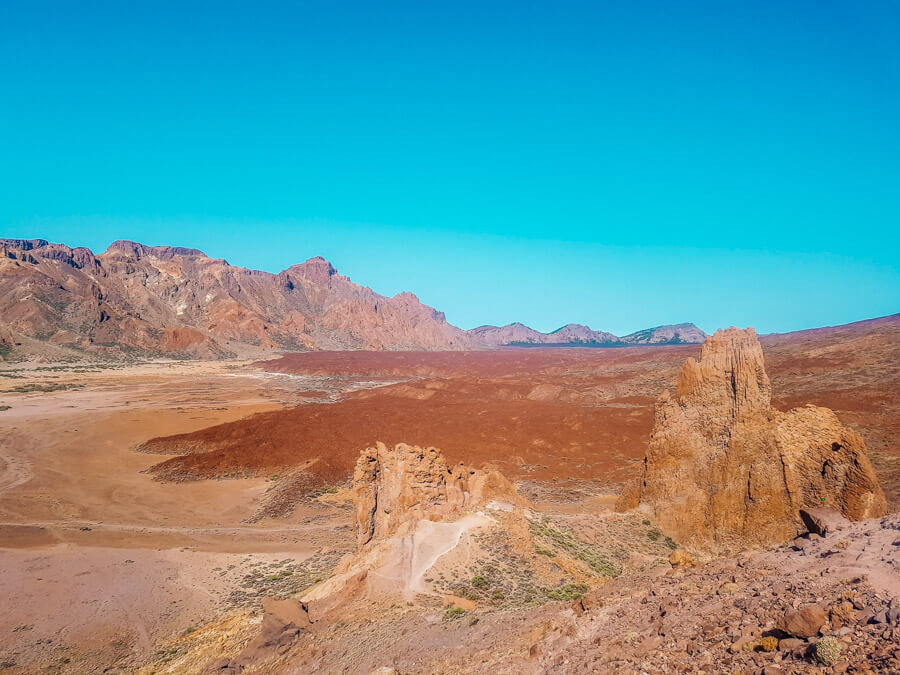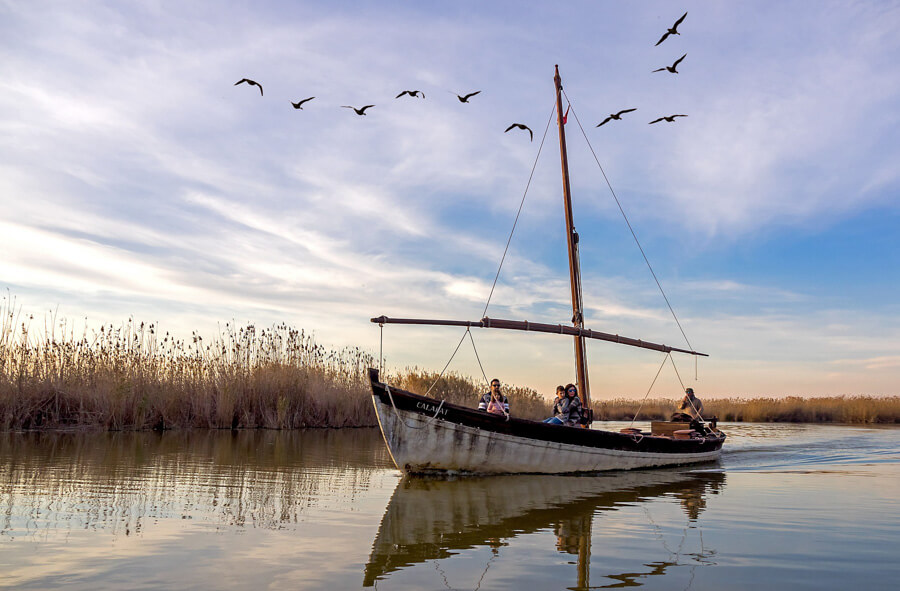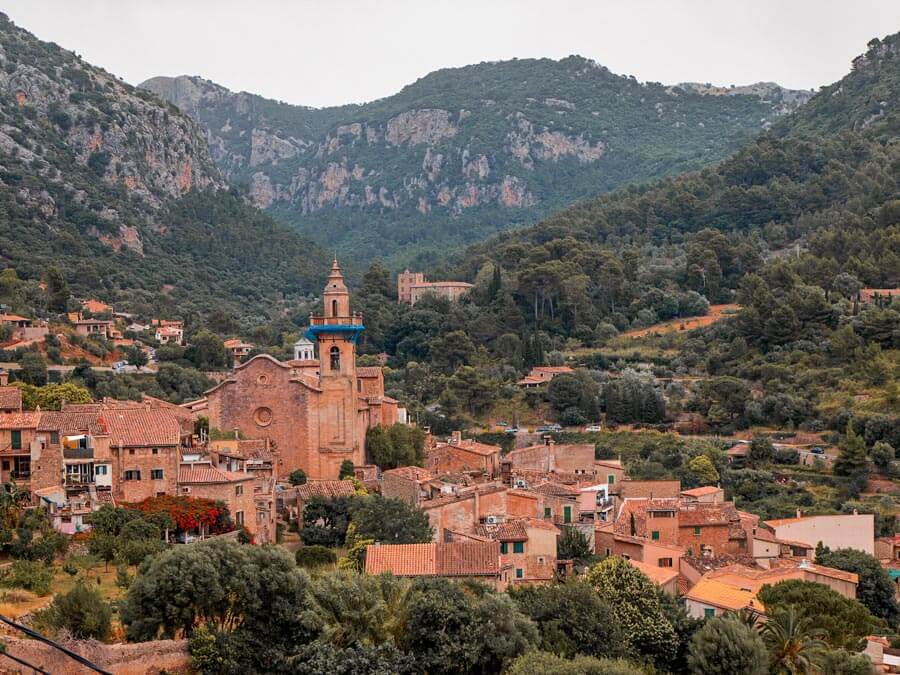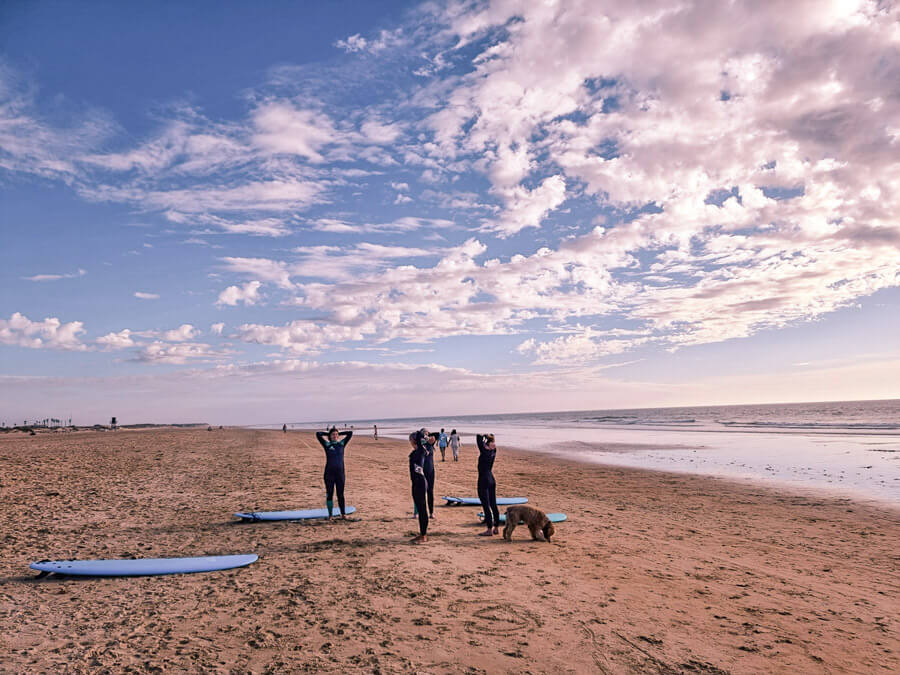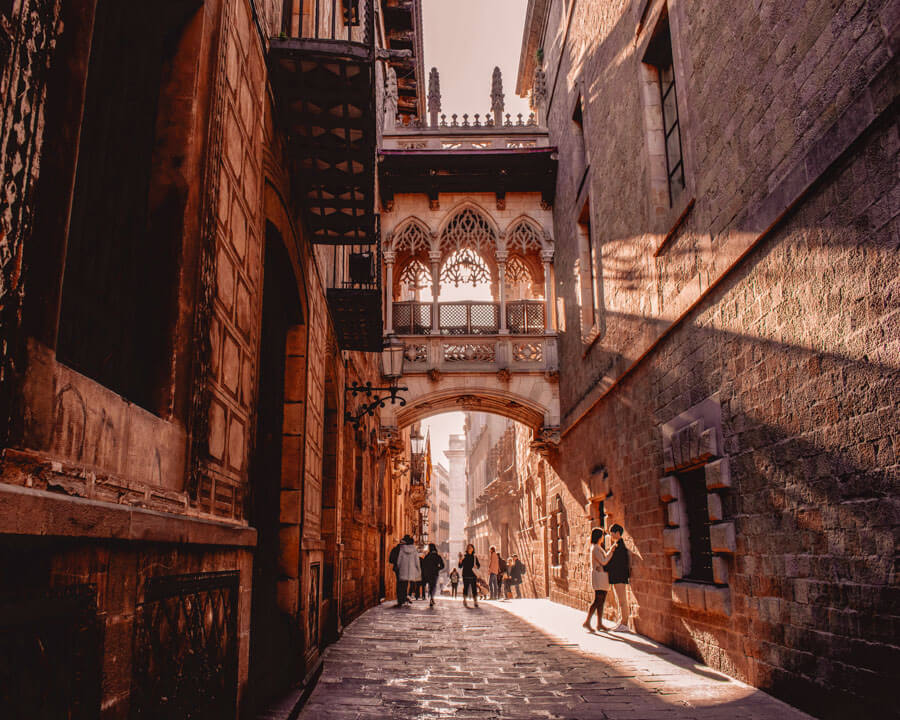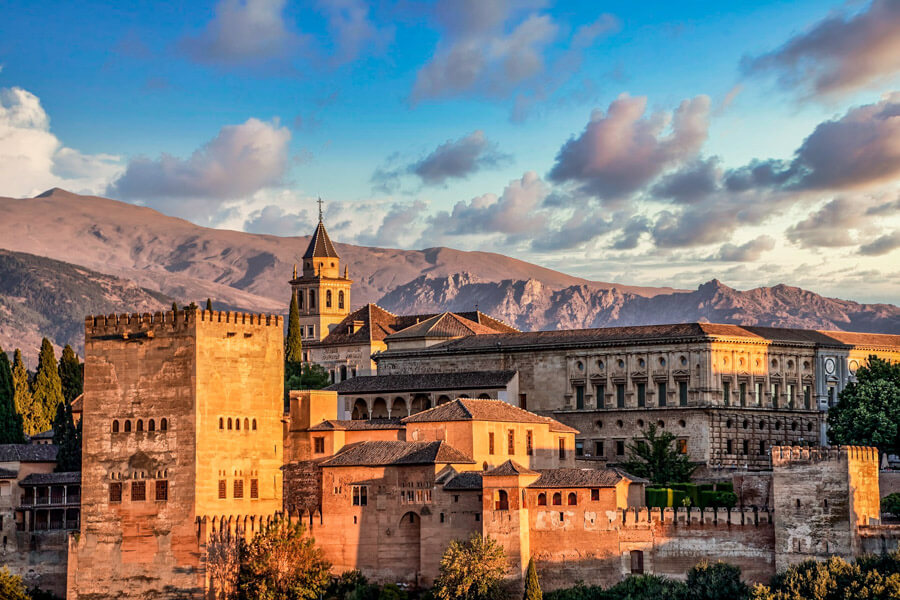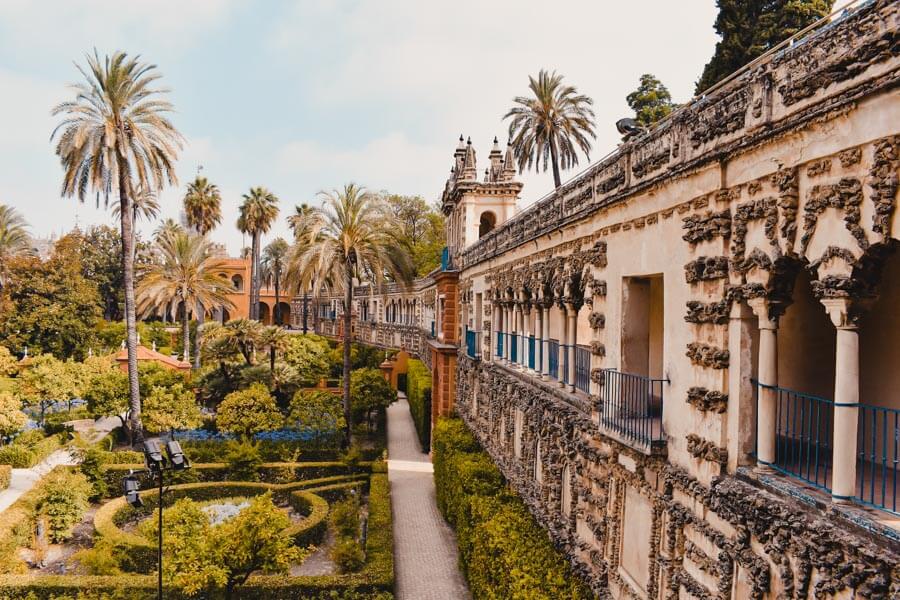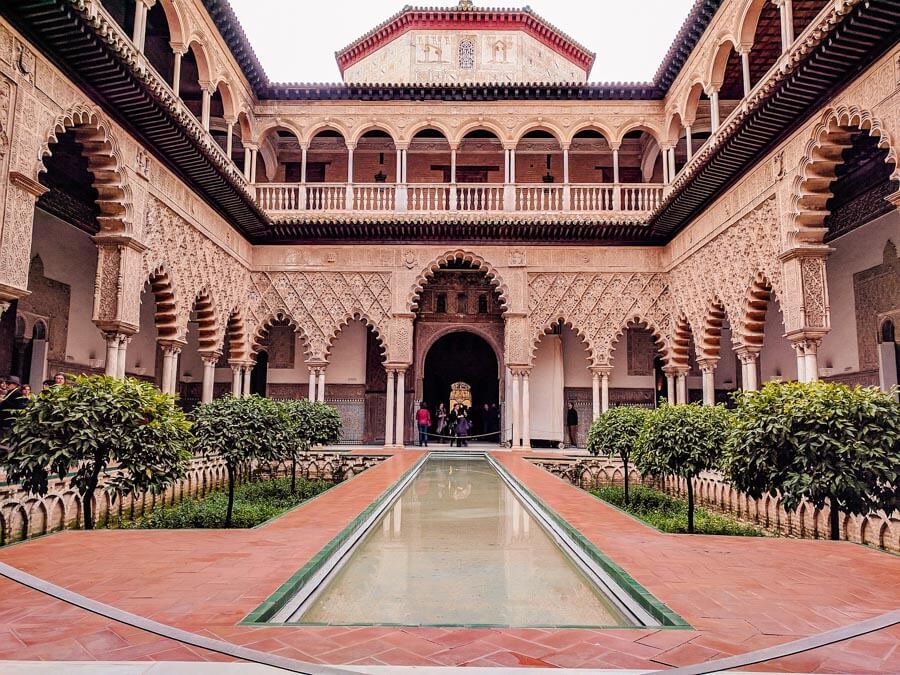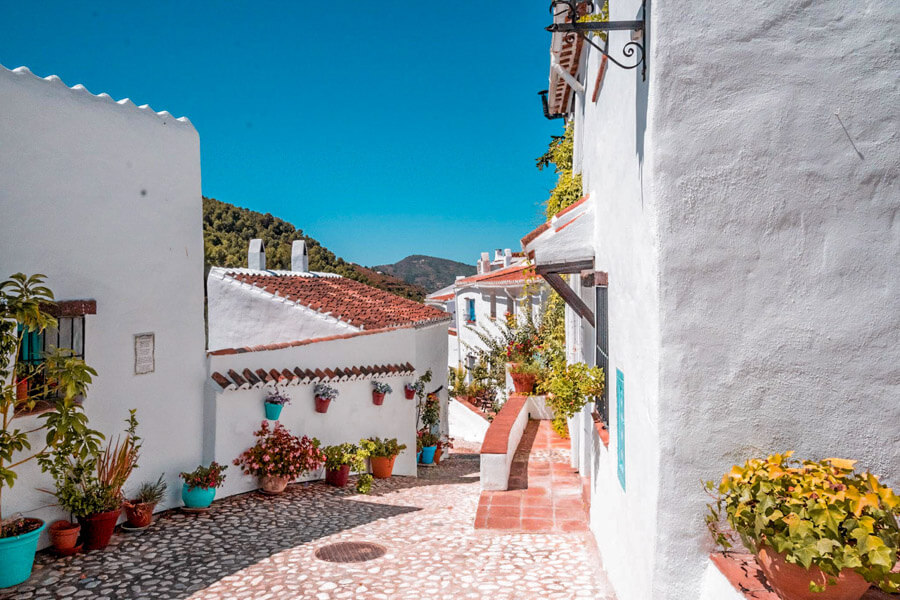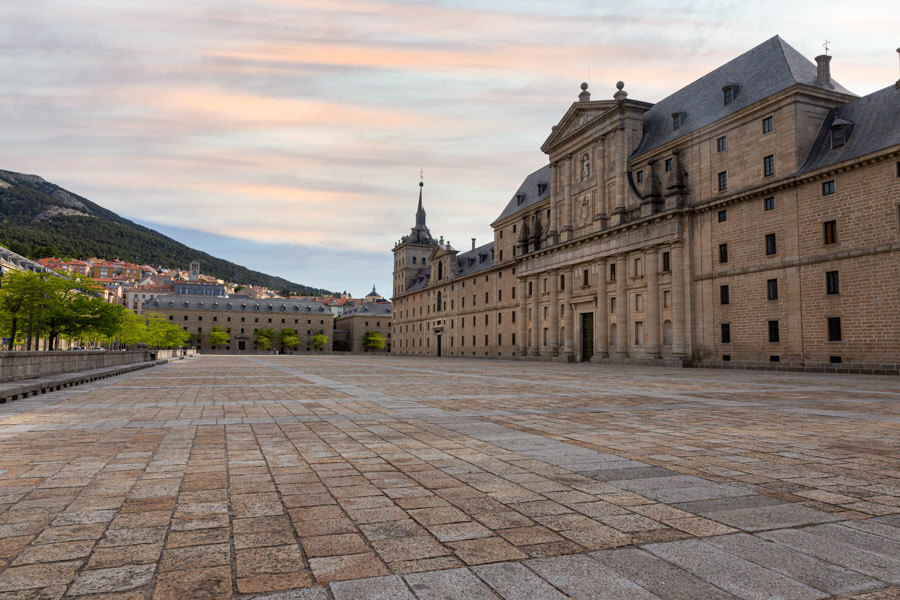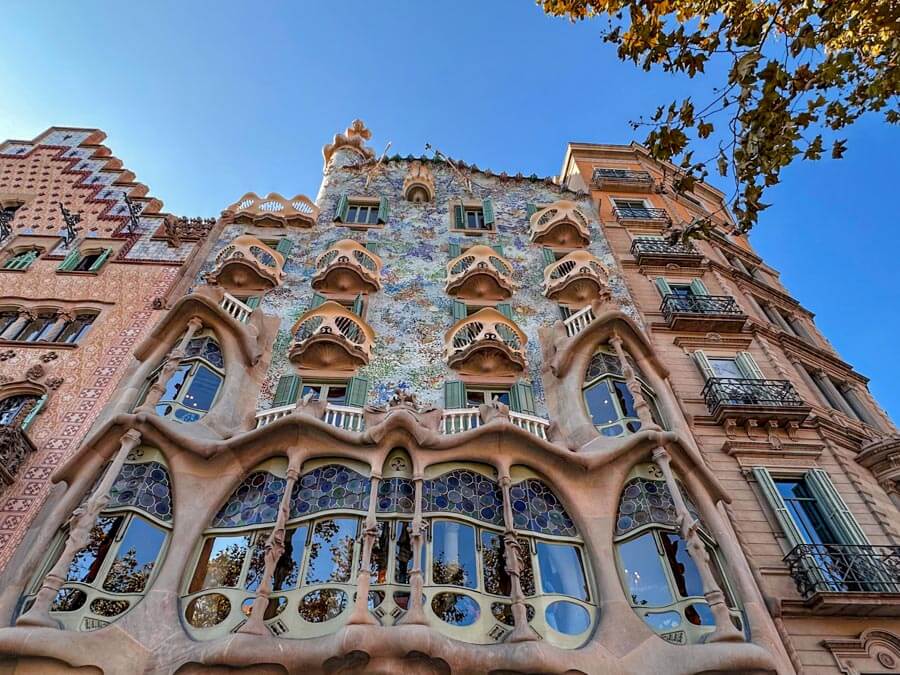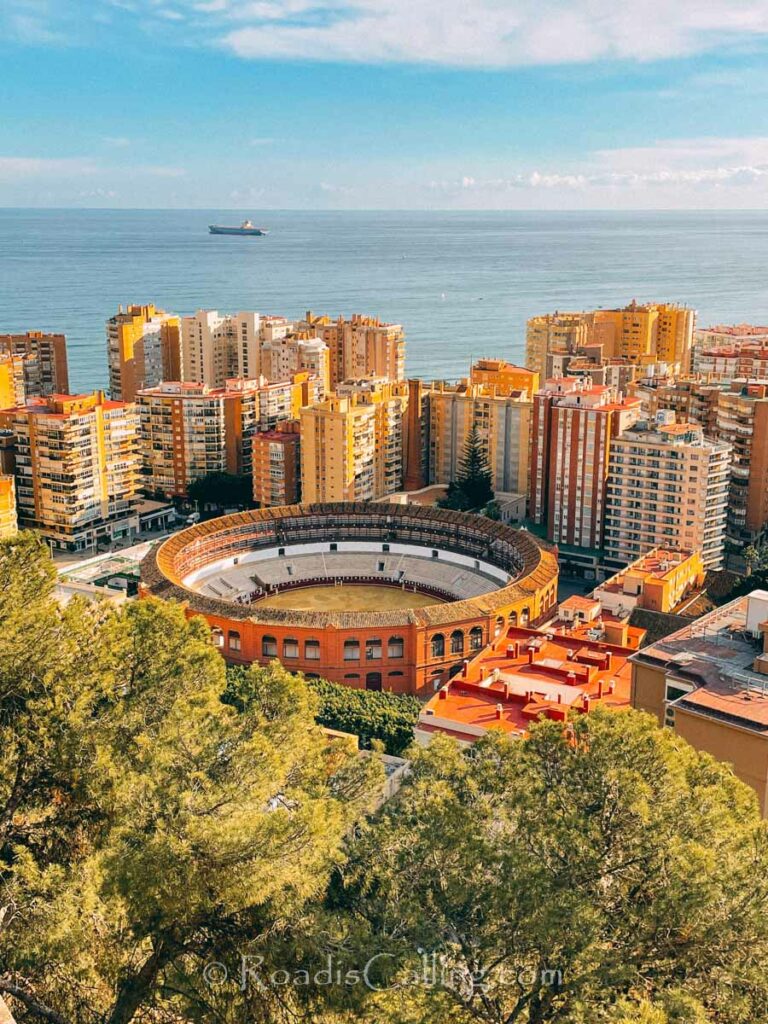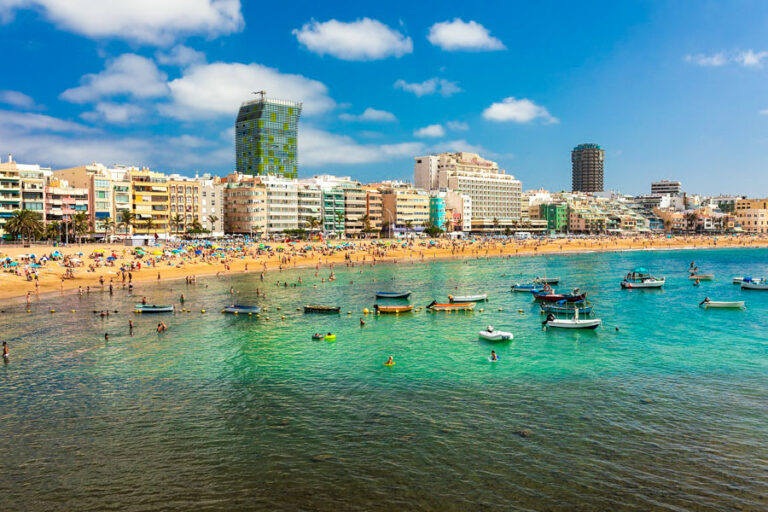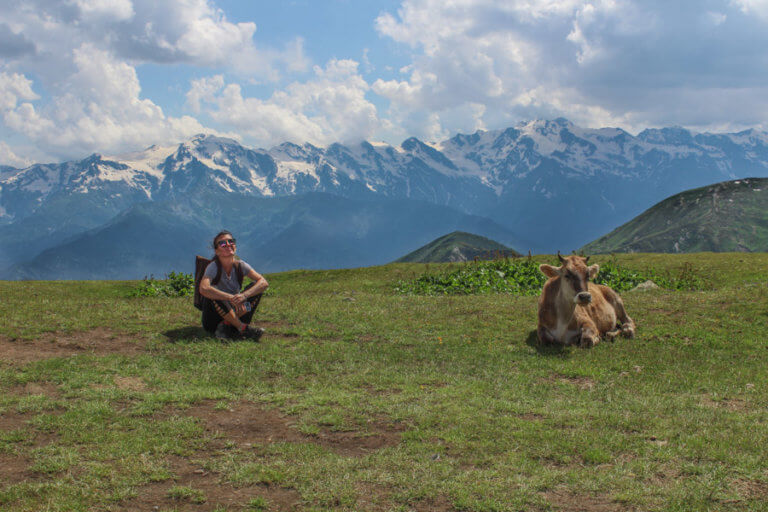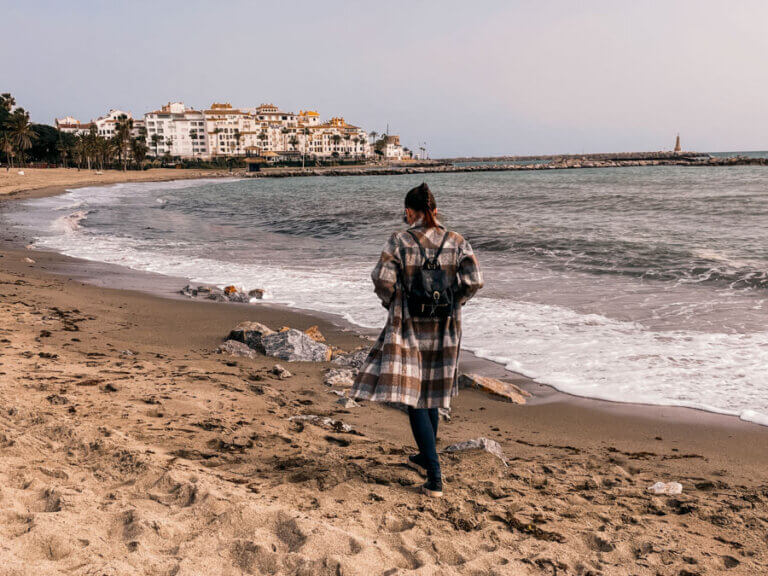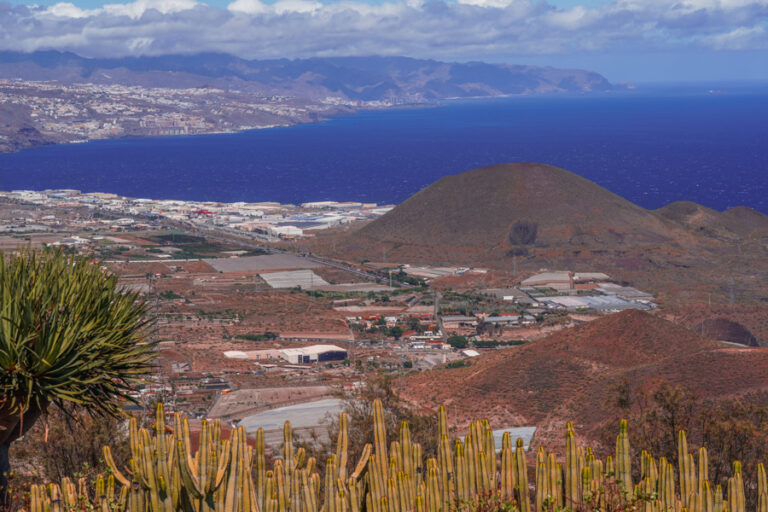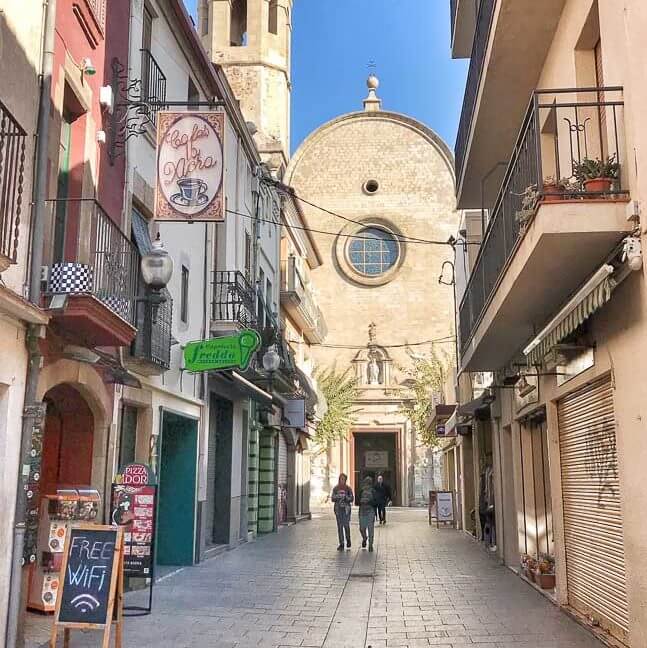29 Legendary Spanish Experiences That You Should Travel to Spain For
Oh, Spain… with its islands, beaches, wines, and everywhere ancient towns… The list of Spain’s experiences is so long that it is always difficult to decide on the best things to do in the country, especially if you are coming here for the first time.
I visited Spain on quite a few occasions and recently came here to stay long-term. But you know what? I am still learning about new fascinating places and unique things to do all over the country. Because there are just so many of them.
This is part of the reason why I wanted to compile a list of the most famous and legendary experiences in Spain to help others understand what one must do in this country in the first place. I pulled this article together with other travel bloggers to give more inspiring ideas for your Spain bucket list and cover all the fun things to do in Spain.
Check them out, get inspired, and start planning a trip!
Cultural Experiences in Spain to Get to Know Spanish Culture
1.) Seeing & Learning About Flamenco
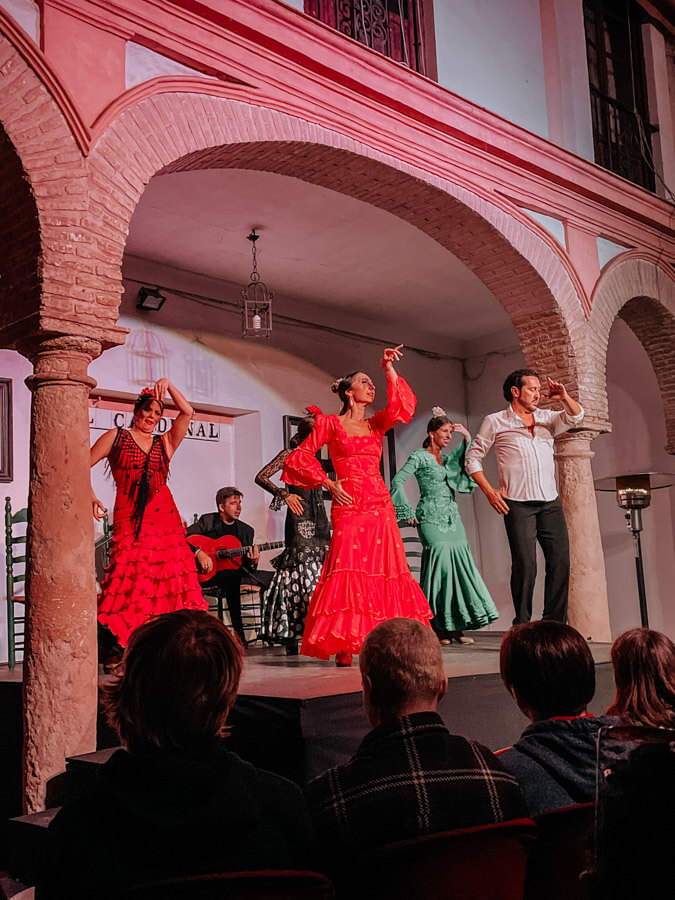
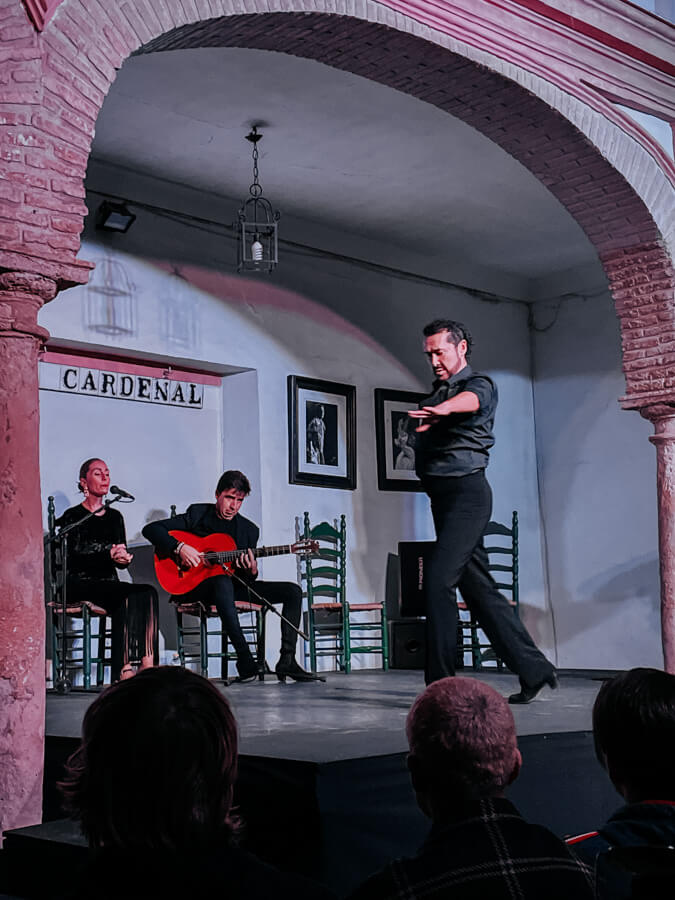
By Gabi from Under Flowery Sky
Let me start this list of the must-have Spain travel experiences with one of the most famous forms of art that represents the traditions of southern Spain.
Flamenco is a dynamic dance that originated in Andalusia. You can feel the Spanish spirit while watching it, the traditional shine of passion and rhythm. The panorama of emotions fills flamenco and every family with children can absorb the vibes. It is an absolute must-do thing in Spain when visiting the south of the country or the capital.
Flamenco is an art form, where guitar and dance accompany each other. Sometimes it also refers to the singing style.
This art appeared at the end of the 18th century, unveiling Jerez de la Frontera as its starting point. It takes roots with the Andalusian Roma (Gypsies) of southern Spain. Some theories even associate flamenco with the classical Indian dance kathak.
The first flamenco cafe opened in Seville as the singing art by Silverio Franconetti in 1881. The phase of „flamenco opera“ lasted from 1920 to 1955 and spread rapidly.
Andalusia is the birthplace of flamenco and the best choice to experience it. The popular Plaza de Espana in Seville is often filled with flamenco dancers. Many theatres and bars offer spectacular shows as well as museums dedicated specifically to flamenco. Like Flamenco Dance Museum in Seville which enchants with expressive artists or the Flamenco Museum in Malaga with a big collection of guitars, dresses, and souvenirs showing off the culture.
Cities where watching flamenco is not only a must but a completely unique intriguing experience are Seville, Malaga, Cordoba, and Granada. Madrid also has good shows in a theater and some bars.
Also, several festivals spread all over Spain, and notably popular is Jerez International Flamenco Festival.
2.) La Semana Santa – Spain Holy Week
By Kristin from Scotland Less Explored
La Semana Santa (or Holy Week in English) is a very special event unique to Spain that is worth planning your vacation around.
It is an annual catholic tradition that happens the week leading up to Easter. The concept of this holy week started in the 16th Century as a means of explaining the story of the last hours of Jesus Christ through processions.
Participants in the procession are catholic fraternities who wear penitential robes and conical hats which conceal their faces. They also carry floats that are called “Pasos” which depict scenes from the crucifixion of Jesus and Virgin Mary’s sorrow. Because these floats are easily damaged, the processions are weather dependent and will not go ahead if it rains.
Today nearly every city and village in Spain has Semana Santa processions.
For the most elaborate celebrations visit the Andalusian cities of Seville, Malaga, Cordoba, Granada, or Northern Tenerife and cities in northern Spain such as Zamora, Valladolid, and Leon.
In Seville and Malaga over 1 million people visit during this time. In other cities, the processions are smaller but there are also fewer people making it easier to get a good view of the floats passing by. Local tourist offices and many websites have maps of the locations and timings of the processions to help plan a visit.
Semana Santa is definitely a unique Spanish experience well worth planning your trip around! However, given it is a popular time to travel, prices for accommodation increase drastically (3-4 times higher than at other times), so make sure to book early and outside busy touristy areas.
3.) Valencia Unique Experience – Las Fallas Festival
By Sanne from Spend Life Traveling
If you are looking for unique experiences in Valencia, then plan a vacation to this city during the annual Las Fallas Festival. It is a traditional celebration held in March in commemoration of Saint Joseph. But it’s better described as a massive 5-day long street party in and around the city of Valencia.
More than 700 enormous, largely papier-mâché statues or monuments are placed throughout the city and in neighboring towns.
Valencian neighborhoods get together and work for nearly the entire year to create their own statue, called falla. All of these fallas have a story behind them. Many discuss current events and try to make a (political) statement.
On March 19, after days of festivities, participants burn the fallas in huge bonfires, and all the hard work goes up in smoke.
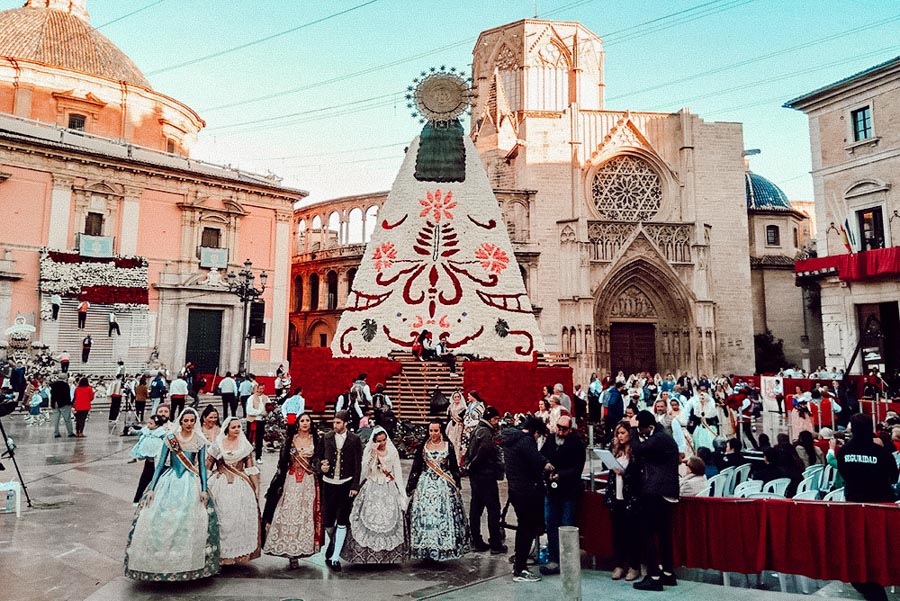
Between March 15 and March 19, the whole city is taken over by this festival. You can enjoy fireworks (you’ll have to experience at least one Mascleta, which consist of an insane amount of firecrackers), flower offerings, live music, and lots of street food.
Las Fallas is a UNESCO-listed cultural event that nowadays attracts people from all over the world.
For five days it’s all about walking around the city, admiring the incredible fallas, taking in the vibe, and dancing the night away with Valencianos who have been looking forward to this event the entire year.
It is definitely one of the most unique experiences in Spain to get to know Spanish culture better!
4.) Caravaca Wine & Horses Festival
By Faith from XYUandBEYOND
The Wine and Horses festival has been celebrated in Caravaca de la Cruz in Murcia Province since the 13th century and is one of the lesser-known Spanish experiences to travel to Spain for. It takes place in May for 5 days in the 5th holiest place in the World named Caravaca which has been recognized by UNESCO.
The Castle of Caravaca was home to the Knights Templar. When moors attacked villagers, they took refuge but found out that the water supply had been poisoned. The Templars set out to find water but there was none that wasn’t poisoned so they loaded up their wineskins and raced back to the castle.
When they reached the castle, a miracle took place which was a blessing of the wine beneath the Cross of Caravaca (a piece of the True Cross). The wine was mixed with the water which at some point became pure and cured the villagers.
On the second day of the 5-day festival, the Parade of Horses takes place. The horses are caparisoned in magnificent mantles embroidered in silk and gold. Each horse belongs to a peña which is a group of villagers and each peña is accompanied by its own brass band.
After the parade, Spanish people gather together to re-enact the race up the hill to the Castle. Four young men have to run with the horses without releasing their hold or they drop out of the race. There are prizes for not only the race winner but the most beautifully dressed horses as well.
The Festival is a raucous party with parades of Moors and Christians, dances, food, drinking, and big celebrations. It is a great event for the whole family to enjoy and see a unique side of Spain.
Top Experiences in Spain for Foodies
Even those who have never been to Spain have probably heard that this country is a paradise for foodies. From various local farms and food markets to fresh and delish local produce, wine-related activities and different tastings, Spain has it all!
This is why you cannot miss at least one of the must-have Spain travel experiences that revolve around traditional foods and drinks. And here is the list of the most popular Spanish ventures for foodies:
5.) Olive Oil Making and Tasting Tour
By Melodie from TravelMustDos
Of course, this experience was going to make the list as Spain is ideal place where to learn about the process of making olive oil and taste it along the way!
Spain’s rich history with olives and olive oil production means there are many farms and cooperatives where to go on an Olive Oil Tasting and Making Tour, either on your own or with a professional guide.
There are many regions around the country that produce olive oil, but the main ones that offer the most immersive experience are Andalusia and Catalonia. In Andalusia, for example, you can catch a tour from many places throughout the region, including Sevilla, Granada, Jaén, Córdoba, Malaga, and Cadiz.
With the Olive Oil Tasting Tour, you can get an enjoyable and informative experience for the whole family. Not only do children receive a unique introduction to olive oil production, but they also gain insight into the harvesting of olives and pressing them into oil – all while enjoying the delightful taste of different local oils.
With experienced tour guides by your side, you can embark on an unforgettable journey as they regale fascinating tales of the region’s history and culture. As a delightful bonus, you can savor some delectable olive oil samples before taking home bottles for yourself.
After the educational yet enjoyable journey, indulge in a tasting of many unique flavors from different types of oils – it’s an experience like no other. Don’t miss out on getting up close and personal with nature in its native environment as well as immersing yourself in the culture and history of Spain during this unforgettable expedition.
Finest Olive Oil Tasting Experiences Not to Miss in Spain
- Olive oil tasting in Cordoba – a hedonistic sensory tasting of 5 different types of Extra Virgin Olive Oils
- Organic oil tasting in Ronda – combine wine and olive oil tasting in one of the most romantic cities in Andalusia
- Olive oil farm tour from Seville – try different varieties of olive oil with an appetizer on a small privately owned factory
- Tasting tour in Mallorca – sample olive oil together with typical Mallorcan bread, tomatoes, olives, and almonds in 16th century House & Olive Oil Factory
6.) Madrid Tapas Tasting
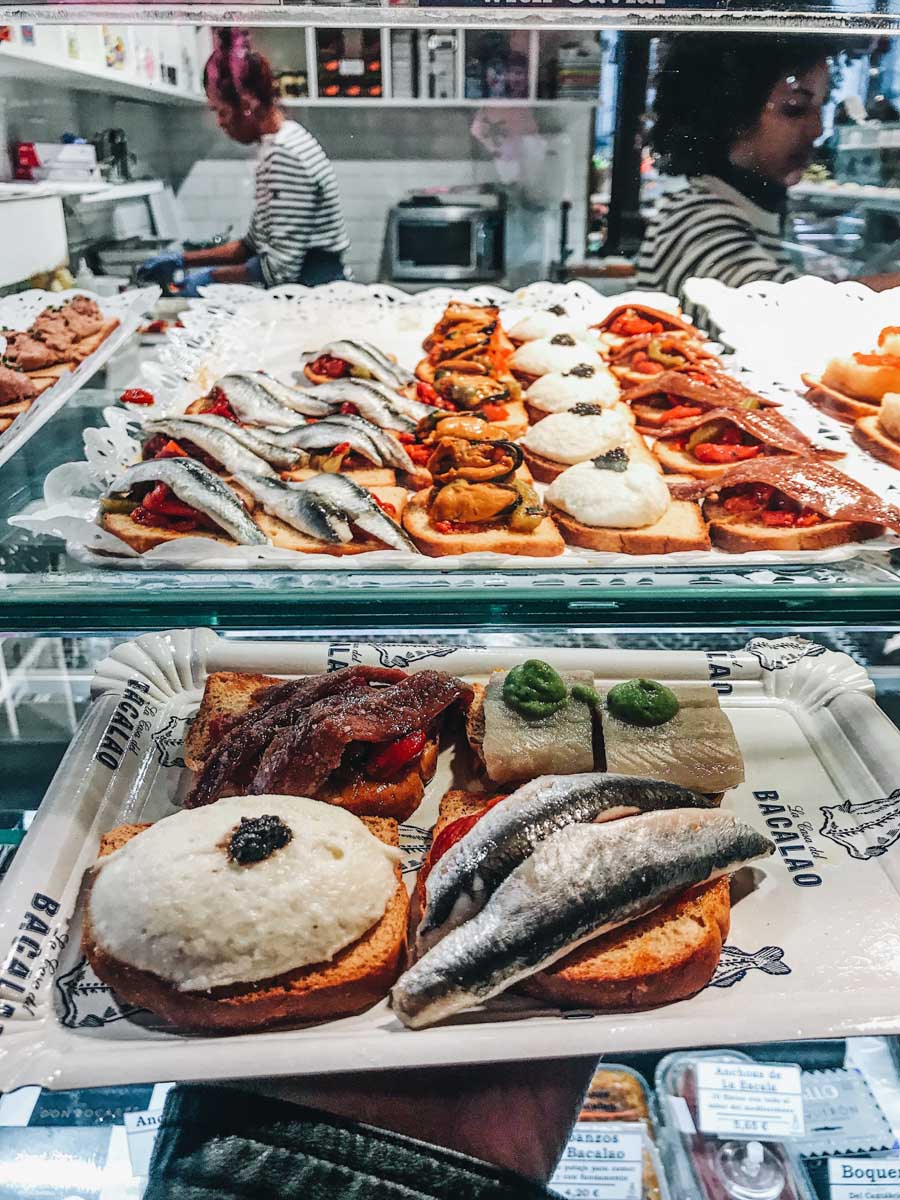
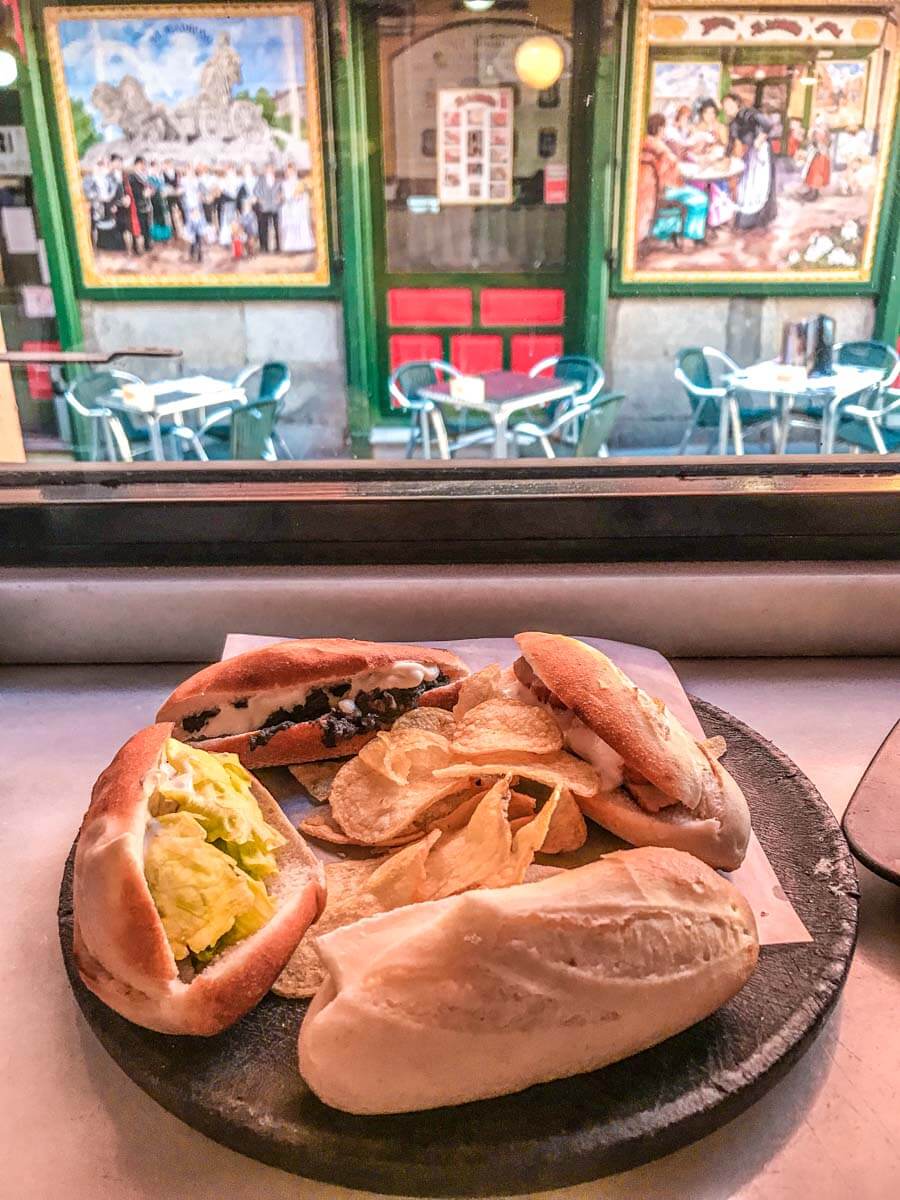
By Tess from Travelling Tessie
Many people visit Spain for its rich culture and history, but one thing that everyone should look forward to is Spanish food!
From Potatas Bravas and Spanish Omelets to Fried Calamari and Croquetas, Spain is bursting with flavor and the best way to experience them all is on a tapas tour. However, not a tapas tour in any city, but particularly in Madrid as there is a huge reason behind it.
Madrid has a long history of tapas and one of the biggest selections of them in entire Spain. And through trying tapas, you can learn about and experience the food scene of Spain just by being in this one city.
Contrary to popular belief, the word tapas does not translate to appetizers or small plates. Tapas were traditionally small portions of food given free of charge when you ordered an alcoholic beverage so that you’re not drinking on an empty stomach. While that still holds true in some establishments, today, when you go out for tapas with friends or on a tour, you’re more likely to receive larger portions for a small fee.
A tapas tour is one of the must-have experiences when visiting Madrid because it’s the best way to try local specialties, regional dishes, and learn about the history of Spanish food all at once.
A typical tapas tour in Madrid will last about three hours and you’ll visit 5-6 restaurants within a specific neighborhood that all specialize in different dishes. At each establishment, you’ll share 2-4 dishes with your small group and have a glass of Spanish wine while your guide shares the history of the dish and the restaurant.
Tapas tours are great for groups of adults, but not suitable for younger children. If you can, try to incorporate multiple tapas tours into your vacation as each tour company typically chooses different restaurants!
I personally experienced a tapas scene in Madrid on this tour which included lots of food options and gave a wonderful introduction to the capital of Spain.
7.) Experiencing Spain Through Food Tour in Barcelona
By Allison from Eternal Arrival
One of the can’t-miss experiences in Spain is taking a food tour through Barcelona which allows you to visit must-see covered marketplaces like Mercat La Boqueria along the way.
You can do a Barcelona food tour in a variety of ways: with a guided tour led by a local (where you also learn about the history), self-guided with an app like bitemojo, or just by following your eyes and nose where looks and smells the most delicious!
Touring Barcelona’s foodie side is best done if you can manage to visit Barcelona in December or January when the crowds are much smaller and the weather is still quite enjoyable.
Otherwise, moving through areas like Las Ramblas and Mercat La Boqueria can be quite stressful, plus it’s far more likely you’ll get pickpocketed in the crowds, which Barcelona is notorious for!
A few things you can sample on a food tour include local cheese, Catalan sausage, and tapas like crispy cod fritters and fried eggplant with honey (berenjenas con miel).
Having a Barcelona food experience is great for everyone, and it works well with families with children so long as they are adventurous eaters and don’t mind trying new things!
8.) Eating Your Way Out in Valencia
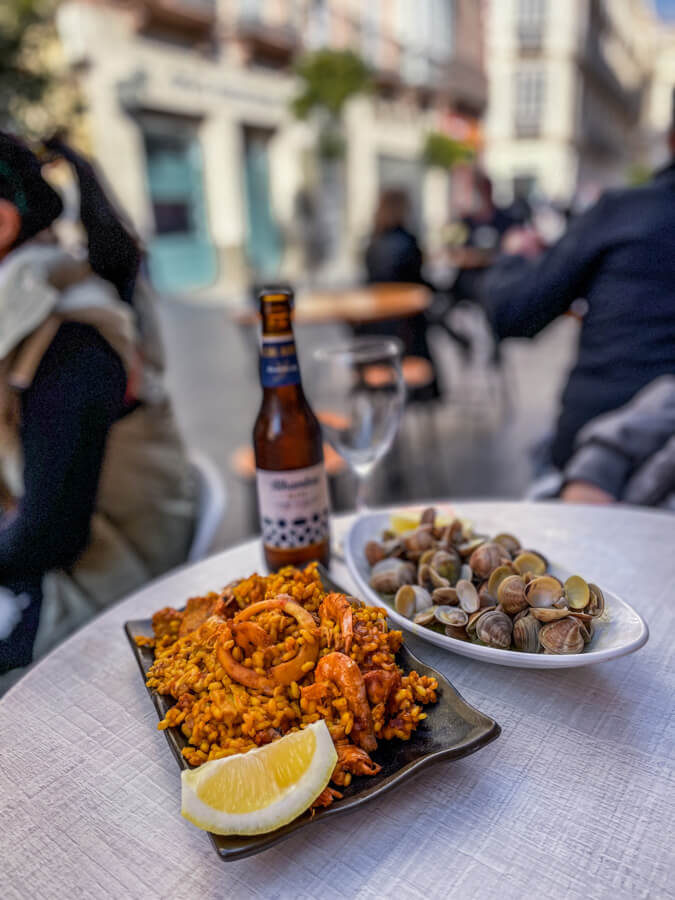
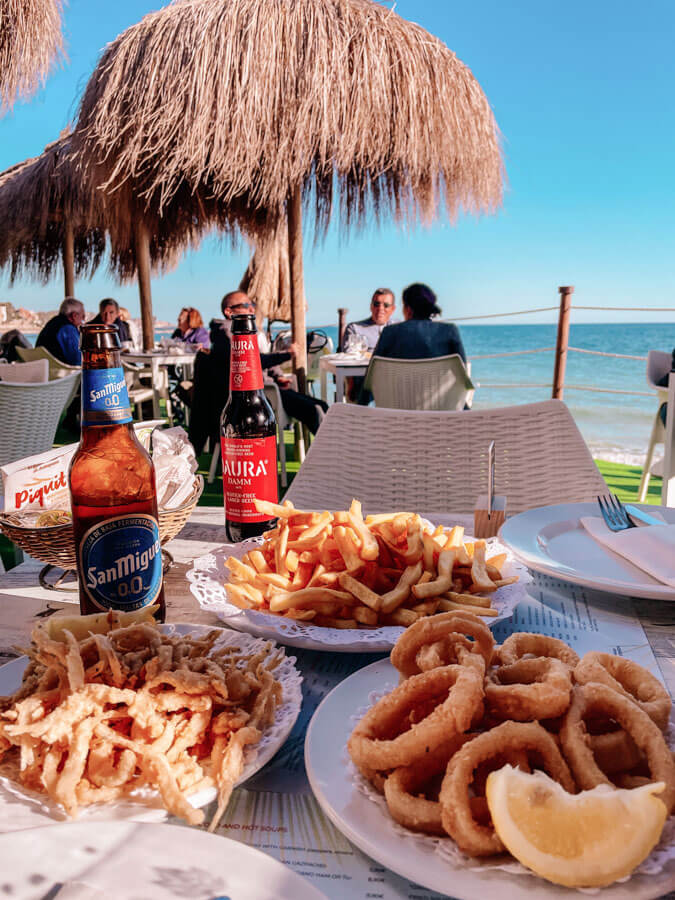
By Vicki from Vicki Viaja
Yes, that’s right, it is a must-have Spanish experience as Valencia is not only a scenic city, but many consider it THE capital of good food in Spain.
Besides stunning sights and the wonderful beaches of Valencia, the city is famous for its fantastic dishes, drinks, and snacks to try that every foodie should probably visit this destination at least once in their life. So be sure to leave enough room on your Valencia itinerary to eat your way through the city’s entire menu and get to know local Valencia by exploring the city’s markets.
You can visit at any point of the year with winters in Valencia being the quietest. But it can get quite crowded during the summer months.
Delicious food in the Valencian community starts as early as breakfast. Be sure to try the typical Valencian breakfast, Horchata and Fartons. This is a sweet milky drink made from tiger nuts. The drink is usually served with Fartons, a sweet pasty specially designed to be enjoyed with the Valencian tiger nut drink.
The most famous of all dishes is the Valencian Paella, the original Paella for which Spain is famous worldwide. Make sure to specifically order a Valencian Paella, as there are other variations from different regions of the country. Other popular rice dishes in the area are Black Rice (Arroz Negro), Arroz al Horno, and Arroz a Banda.
In addition, another typical dish of the region to try is Fideuá. This “noodle paella” is served with seafood and aioli and is another local favorite. Whatever you end up ordering, you will surely not leave Valencia hungry and you will surely have one of the best food experiences in the world!
9.) Exploring the Culinary Scene in the Food Capital of the World San Sebastian
By Megan from Packing Up the Pieces
A list of culinary Spain experiences cannot be complete without a visit to the foodie capital of San Sebastian in Spain’s Basque region. San Sebastian continues to top the world’s “best of” lists when it comes to its unique food scene.
In northern Spain, you won’t find tapas, but rather “pintxos.” These small bites of food usually come on a skewer or a generous piece of bread. Unlike southern Spain’s tapas, Pintxos are not included with the purchase of a drink.
The best way to experience pintxos in San Sebastian is by walking through Old Town and stopping in at one of the many pintxos bars or joining an organized food tour.
Besides the bustling pintxos bars, San Sebastian boasts the highest concentration of Michelin Star Restaurants per square meter in Europe. There are 19 Michelin Star Restaurants in the city and surrounding villages and coastal towns. San Sebastian is home to locally sourced markets and secret culinary societies. Multiple places offer fantastic culinary tours and cooking classes.
Those interested in wine should also try the distinctive Txakoli wine, a fizzy wine from the Basque region that pairs well with fresh seafood.
Although there are tons of museums, hiking paths, beaches, and day trips to explore, San Sebastian is really all about culinary experiences. If really looking to dive into the food scene, San Sebastian is ideal for couples on a romantic getaway or travelers looking to indulge in a foodie paradise.
Must-Have Spanish Experience for Wine Lovers
10.) Wine Tasting in the Priorat Region of Catalonia
By Taylor from Brown Eyed Flower Child
One of the most authentic experiences to have in Spain is wine tasting in the Priorat region of Catalonia. This region is so big and offers so many things to do that fans of wine tourism can plan a separate trip here.
The most convenient way to visit Priorat is either when you are on a trip to Barcelona, Valencia, or when visiting the heart of central Spain. However, my best recommendation for you is to go on a road trip between Barcelona and Valencia and make a detour to Priorat for a couple of days.
If you don’t have much time when in Barcelona or Valencia, you must take a day or overnight trip to this region and stay at Terra Dominicata. Priorat is 2 hours from Barcelona and 3 hours from Valencia, so you’ll need to rent a car.
The Priorat wine region is west of Tarragona in the mountains of Catalonia. Terra Dominicata is a jaw-dropping and luxurious property where you can go wine tasting, savor different Catalan dishes, horseback ride, and enjoy a spa day.
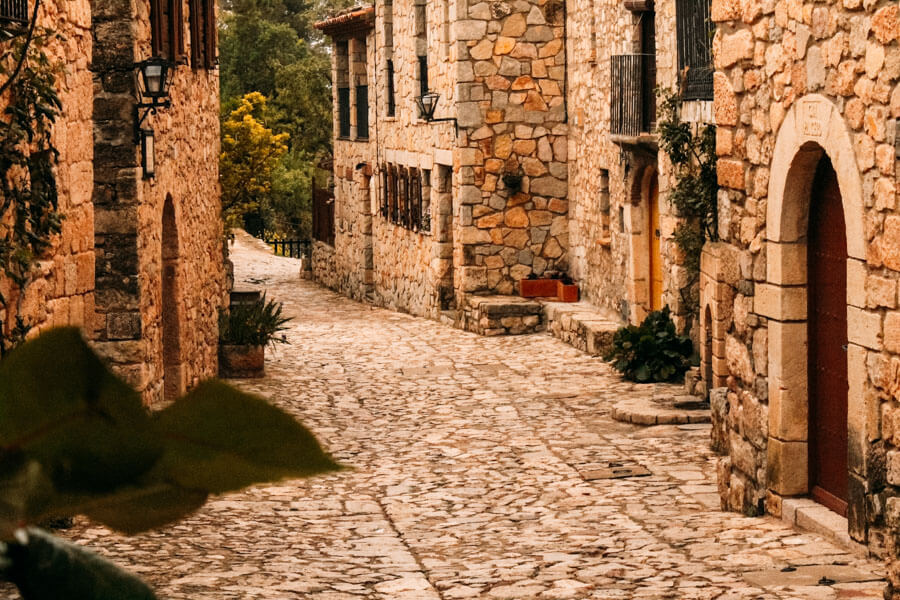
Priorat is a Spanish regional wine made from Garnacha and Cariñena grapes. They are usually aged for a minimum of five years, and some of the wines include Merlot and Cabernet Sauvignon for additional flavor. Priorat wines are also known for their bold flavors, including berries and spices.
The microclimate and soils are unique in the Priorat wine region of Spain, making these wines taste richer than others because the vineyards are located on slanted terraces. During a visit to Terra Dominicata, you can tour the winery and do a tasting, have a picnic among the vineyards, and embrace the beauty of nature and peacefulness all around.
Visiting Priorat is an authentic and refreshing experience, especially if you’re traveling from a major city like Barcelona. The best time to visit Priorat is between June through September. It’s a special place for a couple’s getaway, a girl’s trip, and even a solo escape.
11.) Discovering What ‘Cava’ or Spanish Sparkling Wine is Like
By Christin from Christin has Fernweh
Another reason to plan a trip to Spain is to try the country’s unique flavorful Spanish sparkling wine called ‘Cava’. It is usually available in restaurants around the country but doesn’t provide as immersive and authentic experience as a trip to the actual place where cava is made.
And that place is the Penedes wine region, just a quick train ride away from Barcelona. It is home to several wineries that have been producing quality wines for centuries and a destination where to find the best wine tasting in Barcelona.
The region is unique in that way that it is both mountainous and coastal, allowing for a variety of different grape varieties to grow in different areas. The climate is Mediterranean, with warm, dry summers and mild, wet winters. The soils are mostly calcareous and consist of clay, which suits well for the cultivation of grapes. The most notable wines of Penedes are Cava, a sparkling wine made from traditional grape varieties such as Macabeo, Xarel-lo, and Parellada.
The winemaking tradition in Penedes is centuries old, with many of the wineries having owners belong to the same families for generations. Now, most of the wineries have tasting rooms where you can sample their cavas and wines.
If you don’t speak Spanish or Catalan, your best option will be Frexeinet winery where you can sign up for a tour on your own. They offer tours in different languages. Llopart is also a good winery, less touristy but offering high-quality cava!
Many of the wineries in the region have adopted sustainable practices, such as reducing water and chemical use, as well as implementing biological pest control. The natural surroundings lend themselves beautifully to exploring the area by bike and hiking. This way, you can visit several wineries on the same day and get a bit of exercise in!
12.) Having a World Class Cocktail in Barcelona
By Martha from MayCauseWanderlust
While not really wine, it still deserves a separate spot on the list of the best things to do in Spain as trying a cocktail in Barcelona is like nowhere else.
In recent years, Barcelona’s bar and mixology scene has developed into one of the most exciting in the world. In fact, in 2023, it has three bars in the top ten of the list of the World’s Best Bars, including the number 1 spot.
Therefore, one of the must-have travel experiences in Spain is having a drink at one of the best cocktail bars in Barcelona. And one of the great things about Barcelona’s bar scene is that they can be very ‘cool’, without being snobbish or elitist. The drinks don’t have to be alcoholic either – there are some amazing mocktails on the menus.
Sips cocktail bar is in the smart streets of Eixample (a district in Barcelona with stylish boutiques, bars, and restaurants). It’s a sultry place whose cocktails are high on innovation.
However, many of the good bars are in the Old City. Two Schmucks calls itself a ‘five-star dime bar’, which makes sense when you see this Art-Deco styled place on a graffiti-covered street in El Raval. A nice old-school option is Boadas Cocktails, which offers a 1930s feel just off Las Ramblas.
And when you get into the pretty El Born neighborhood, you’ll find number 1 on the World’s Best Bar list – Paradiso. It’s an intimate place with a playful menu and some fun flair bartending. Other options include Dr. Stravinsky bar, which has apothecary vibes due to the shelves of its own infusions and mixes.
TOP TIP: Check ahead whether the bar you’re interested in takes reservations – there can be queues for some of the popular places.
Unique Bucket List Spain Experiences for Nature Lovers
13.) Introduction to Spain’s National Parks in Montserrat Mountains
By David & Intan from The World Travel Guy
The mountains of Montserrat are among the unique nature places to visit in Spain as they offer a great introduction to Spain’s 16 national parks, with lots of wonderful scenery and family-friendly hiking trails.
It’s undoubtedly one of the most beautiful areas of nature in the country, and there’s also an old Catholic monastery from the 11th century that you can still go inside today!
It’s fairly easy to visit Montserrat on a day trip from Barcelona and any time of the year is okay to visit too. Although spring, summer, and fall generally offer the best weather for enjoying the hiking trails. Most of the hikes in Montserrat are doable for kids and people of all ages, so this national park is great for the whole family.
The three main ways to get to Monserrat are by train, bus, or car, but the train is generally the most common way to get there from Barcelona. Just go to Placa d’Espana station and take the R5 line (Manresa) to Montserrat. The train takes you to the foot of the mountains at Montserrat, and then you take a quick cable car or rack railway the rest of the way up to the national park!
14.) Experiencing the Healthiest Climate in Europe in Costa Blanca Region
By Martina from PlacesofJuma
A trip to the lovely Costa Blanca is undoubtedly one of the top experiences to have in Spain!
The so-called White Coast is located in the province of Alicante and it features not only stunning beaches and a huge number of wonderful sites with lovely villages, but it also has the healthiest climate in Europe with a lot of sun, mild temperatures, and low humidity which is particularly appealing for those who want to escape the cold and experience warm winter in Spain.
The beautiful beaches of Xabia in the north, such as Granadella Bay and Cala del Moraig, are stunning. Altea, a white city with a lovely ancient town facing the sea, is well worth a visit.
Another highlight is Benidorm, the so-called “Manhattan of Spain,” where you will be astounded by the many buildings and have a great time at the various clubs and amusement parks. Villajoyosa, a colorful beach village at the Costa Blanca, is a must-see! Of course, Alicante, the capital, is equally lovely, with an outstanding old town and fortress.
The Peón de Ifach, which rises 332 meters above sea level and covers 47 hectares, is Costa Blanca’s most notable attraction. This natural treasure creates an exceptionally stunning environment when combined with the blue sea, gorgeous sandy beaches, and the quaint town of Calpe.
Many people also go there on a hiking tour, which is an incredible experience. When you reach the summit, you are greeted with a beautiful panorama over Calpe and the Costa Blanca.
15.) Climbing the Highest Peak in the Iberian Peninsula
By Linn from Andalusia Hiking
One of the most unique experiences you can have in Spain is climbing the highest peak in the Iberian Peninsula, Mulhacén (3479 masl) in Granada’s Sierra Nevada.
While you can do it as a multi-day hike which can be hard depending on the side you tackle it from, Mulhacén can be a fairly easy hike and even great for solo hiking if you do it as a day hike.
There is a bus shuttle in the summer months (which is the only time you can hike Mulhacén as it is covered in the snow in the winter) that takes you from Capileira to the highest point where any vehicle can go and beyond where private vehicles can drive. The bus will pick you up exactly 6 hours later which gives you enough time to take pictures and have food at the top.
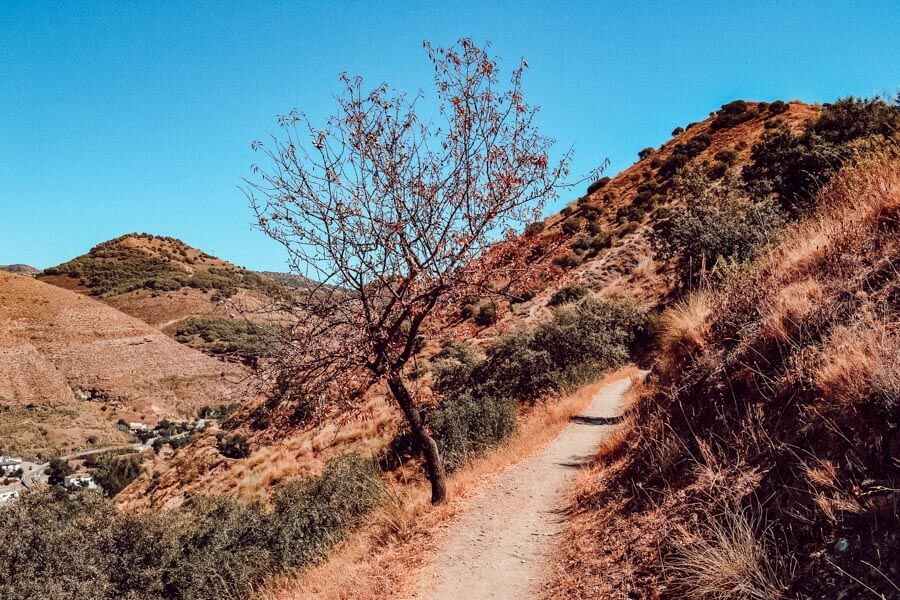
It is a high-altitude hike, but older children that are used to hiking can do it as the trail is easy to follow.
The feeling of standing on the top of Spain is like no other and there are often mountain goats hanging around on the top which adds to the experience.
If you love hiking and travel around the world for unique hiking experiences, don’t miss this one in Spain in the Iberian Peninsula! One of the most impressive Spanish cities Granada is nearby where you can also experience the best of what Andalusia has to offer.
16.) Stepping into One of the Most Globally Important National Parks
By Lucy and Dan from Thoroughly Travel
Among all Spain experiences, this one has global importance until this day and that is Teide National Park in Tenerife.
Situated in the middle of the island, the largest of Spain’s Canary Islands, Teide National Park is a volcanic area in Spain and a UNESCO World Heritage Site. Centered around the towering volcano Mount Teide, the park features dramatic landscapes and impressive geology and should be on every visitor’s Spanish bucket list.
The top of Mount Teide volcano is 3,715 m (12,188 ft) tall and is the highest point in Spain. A cable car can take you up to the base station, but hiking to the very top is only possible with a special permit or with a guide.
Most tourists choose to explore the many craters and lava fields on self-guided walks via the park’s network of trails and viewpoints. While those looking for something more unique can visit at night and gaze at the stars, as the area boasts some of the world’s clearest skies.
Teide National Park offers some of the coolest activities in north Tenerife and is one of the best places to visit in Tenerife by car. It is easily accessible from many many towns, although it is possible to go by bus from Puerto de la Cruz and Costa Adeje. The winding mountain road provides panoramic views of Tenerife’s coast, the Atlantic Ocean, and other Canary Islands.
Parking and entrance are free but can be very crowded in the summer months, so it’s best to arrive early. Alternatively, tours are available from most towns and resorts around the island.
17.) Exploring the Rice Fields of Albufera – the Birthplace of Paella With Rich Nature
By Valencia Revealed
Here is a lesser-known place in Spain that is perfect for both nature lovers and foodies, guaranteeing non-touristy activities.
Albufera is a Natural Park, in the vicinity of Valencia. It is a unique and rich in resources natural reserve with three most important traditional uses: fishing, hunting, and agriculture, linked to rice cultivation.
It has been an important center of agriculture and fishing for centuries. Today visitors can see traditional rice fields and fishing boats in this park, learn about the local way of life, and the important role that Albufera has played in the region’s history.
And the best part for foodies – you can sample a range of dishes made with the freshest ingredients, including paella, seafood, and other traditional Valencian dishes as the park is renowned for being the birthplace of paella.
One of the main attractions of Albufera Natural Park is its stunning landscapes, which are made up of a large lake surrounded by rolling sand dunes and rice fields. The park is also home to a diverse range of wildlife, making it a haven for bird watchers and nature enthusiasts.
Come here to take a boat tour of the lake, explore the park on foot or bike, and at the end of the visit try paella
Albufera is one of the best day trips from Valencia and a must-visit for anyone who loves nature as it provides a truly unforgettable experience.
Incredible Experiences in Spain That You Didn’t Know About
18.) Visiting the Newest Piece of Land in La Palma (Canary Islands)
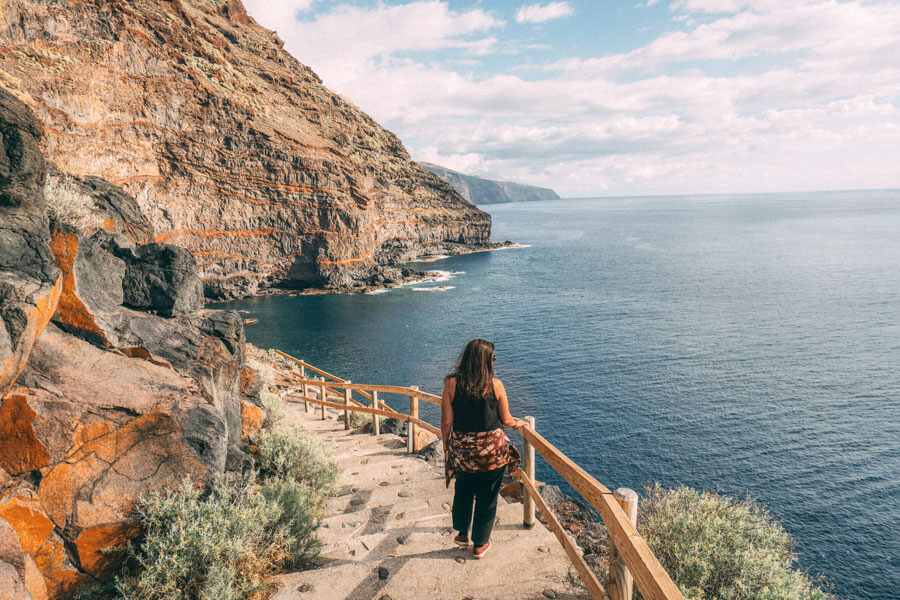
By Inês from Random Trip
Does the name La Palma ring a bell?
Last September 2021 the small Canary Island of La Palma drew attention to the media all over the world because of the eruption of a new volcano. The eruption lasted for 85 days and the images of the red lava swallowing entire villages on its way to the sea still echo in our minds.
These tongues of lava that burst through the Atlantic made La Palma’s territory a little bigger and are, to this day, the youngest land in Europe.
You can visit the recent Tajogaite Volcano’s affected area and the lava flows that created this newest piece of land, from an empathetic and respectful point of view, on this small but heterogeneous island.
The best way to do it is with a local tourism agency like Isla Bonita Tours (both personally and professionally affected by the eruption). But you can also see it on your own from some viewpoints like Mirador el Time or Mirador de Tajuya.
Apart from the newest piece of land, La Palma has a lot to offer. Don’t miss Roque de los Muchachos for the best stargazing (one of the areas of the world with the best conditions for astronomical observation) and Caldera de Taburiente National Park for one of the most beautiful trekking in the Canary Islands.
You can visit La Palma with all the family (kids will love it!) any time of the year but bear in mind that from April to October you get better chances of good weather to enjoy bathing in its beaches and natural pools.
19.) Whale Watching in Tenerife
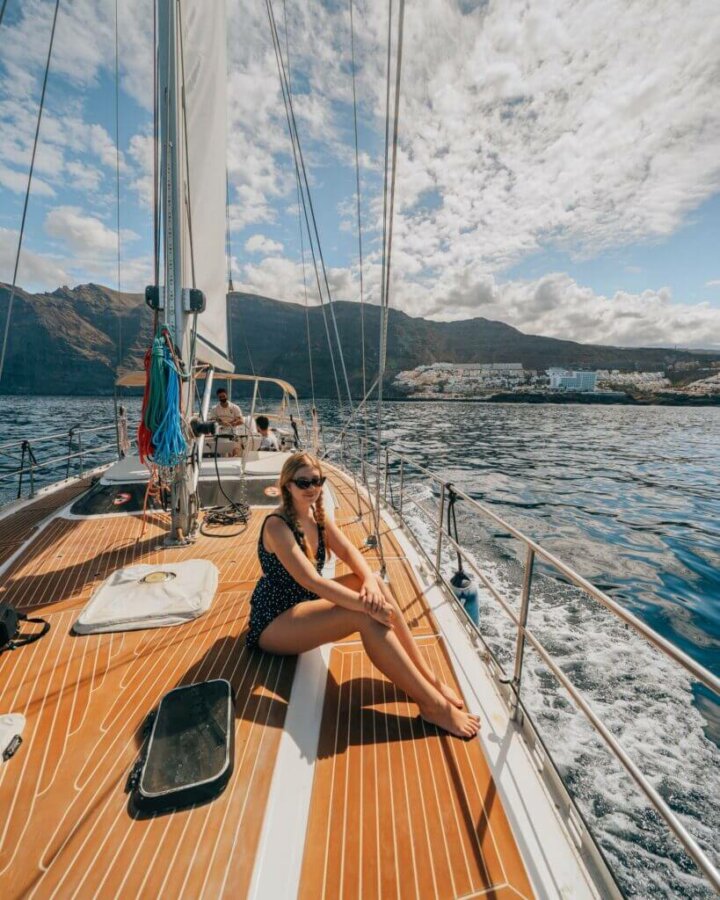
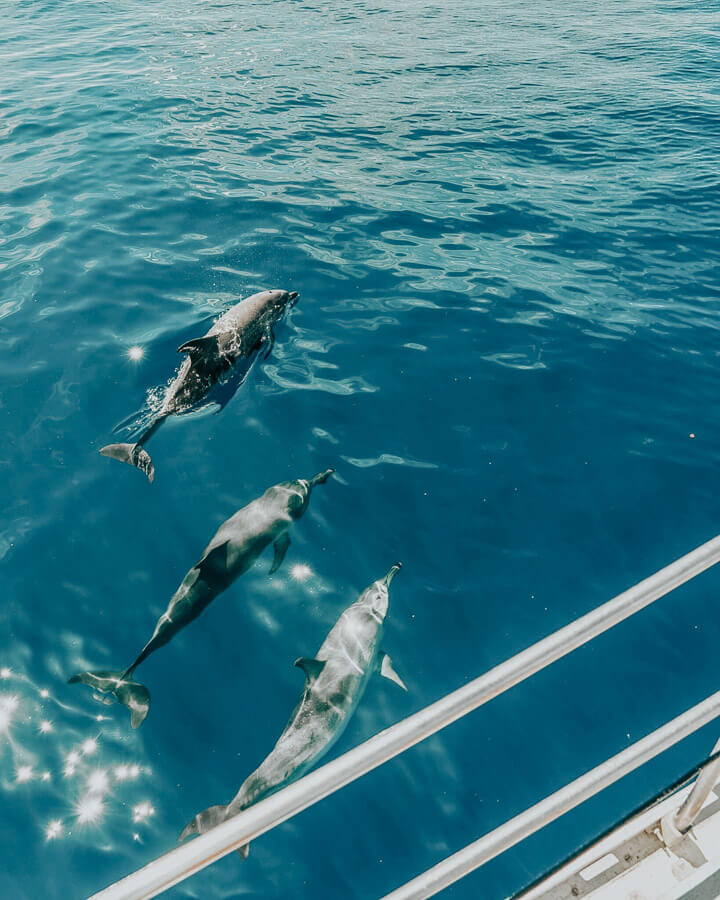
By Marta from Where Life is Great
Whale watching in Tenerife is a breathtaking experience that showcases the natural beauty and diversity of Spanish flora and fauna. Both south and north of Tenerife are one of the best places in Europe to observe whales and dolphins in their natural habitat. The clear, turquoise waters around the island provide the perfect backdrop for witnessing these magnificent creatures.
During whale watching in Tenerife, you will have the opportunity to see several species of whales and dolphins, including the Pilot Whale, Bottlenose Dolphin, and even the rare Humpback Whale. The whale-watching tours provide an up-close and personal encounter with these fascinating animals, allowing you to learn about their behaviors and habits.
The best time to go whale watching in Tenerife is from December to April when the seas are calmer, and the whales are more active. This is also a great time to escape the cold weather and enjoy some warm, sunny days.
During the winter months, it’s common to spot pilot whales and orcas, while the summer months bring the chance to see sperm whales, fin whales, and humpback whales.
Whale watching is suitable for families with children as it provides an educational and exciting adventure. This eco-tourism activity is not just a fun day out but also a chance to learn about the local wildlife and conservation efforts. Guides on the boats are knowledgeable and can provide information about the different species and their habitats.
20.) Seeing Unique Mountain Villages in Mallorca
By Marjut from The Smooth Escape
The island of Mallorca is a popular tourist destination in Spain and is best known for its gorgeous beaches, all-inclusive resorts, and vibrant nightlife scene. However, it is also home to some idyllic mountain villages that should be a part of every Mallorca itinerary. Especially if you are looking to experience the island in an authentic way outside busy touristy routes.
The island’s north coast dominantly has the scenic Tramuntana mountain range, where you’ll find the fairytale-like villages of Deia, Valldemossa, Fornalutx, and Banyalbufar. Characterized by cobblestone streets, hidden passageways, and traditional stone houses, these villages have managed to maintain their old-world charm and mystery.
With their rich cultural heritage and history dating back to the times when kings from Morocco ruled Spain, exploring these villages will make you feel like you’ve stepped into another era. It is a whole different world in comparison to the busy capital and the touristy beach resorts of Mallorca.
Perhaps the most famous of the villages is Valldemossa, which gained its fame after the renowned Polish composer Frederic Chopin lived there for a while. Its picturesque streets have lines of charming cafes, cute shops, and art galleries. And its quaint doorways have countless decorations of flowers.
Thanks to its safe and quiet streets and a variety of family-friendly accommodations, Valldemossa, like the rest of the Mallorcan mountain villages, is an excellent destination to visit with your children.
21.) Learning How to Surf in One of the Best Areas for Winds in Europe
By Joanna from The World in My Pocket
Spain is a great destination for water sports lovers, with one of the best areas in Europe for winds – in and around Tarifa.
The coast of Cadiz is a perfect place to learn how to surf in Spain, whilst also enjoying the rural lifestyle. The small village of El Palmar is a rustic place very popular with surfers because of the mild waves that are perfect for beginners.
There are plenty of places here where you can take lessons or just hire the equipment if you didn’t bring your board with you.
The beach in El Palmar is wild, with no developments on it. Here you won’t find any large hotels or big restaurants – only small surf camps, a few B&Bs and independent, simple bars and restaurants that serve the most delicious fish dishes.
To get to El Palmar you need to hire a car, which makes this village out of the tourist path. The surf community here is also very friendly, and if you choose to come here you will easily make friends among the locals, who have the same passion, surfing.
The best time to come to El Palmar to learn how to surf is winter. The weather is still mild and sunny, whilst the beaches remain empty – perfect to have the waves all to yourself.
Other Epic Spanish Experiences That You Shouldn’t Miss
22.) Visiting the Gothic Quarter in Barcelona
By Veronika from Travel Geekery
When traveling to Spain, one cannot leave out Barcelona, one of the most beautiful Spanish cities. The eclectic and fun destination bears the marks of the famous architect Gaudí. A bit less famous, but equally showing the city’s past, is Barcelona’s Gothic Quarter.
The Roman origins of Barcelona can be seen and felt throughout this historical quarter. However, there’s more than meets the eye, and not all old-looking sights and monuments are as historical as they pretend to be.
Barcelona took on the tremendous task of hosting the World Expo in 1929. The mayor of the time approved a major overhaul of the city’s historical heart – for practical purposes, like widening the streets and boulevards, and often even more so for decorative purposes.
One of the facelifts was done to Barcelona’s Cathedral, which Antoni Gaudí hated. The most famous sight in the Gothic Quarter, an ornately carved el Pont del Bisbe, is actually fake. For one, the gargoyles don’t have any holes for the water to go through.
There are so many other details and things to notice in the Gothic Quarter, it’s quite fun to spot them. I recommend visiting with a guide on a walking tour who’ll help you uncover them.
23.) Getting to Know the Prettiest White Villages in Southern Spain
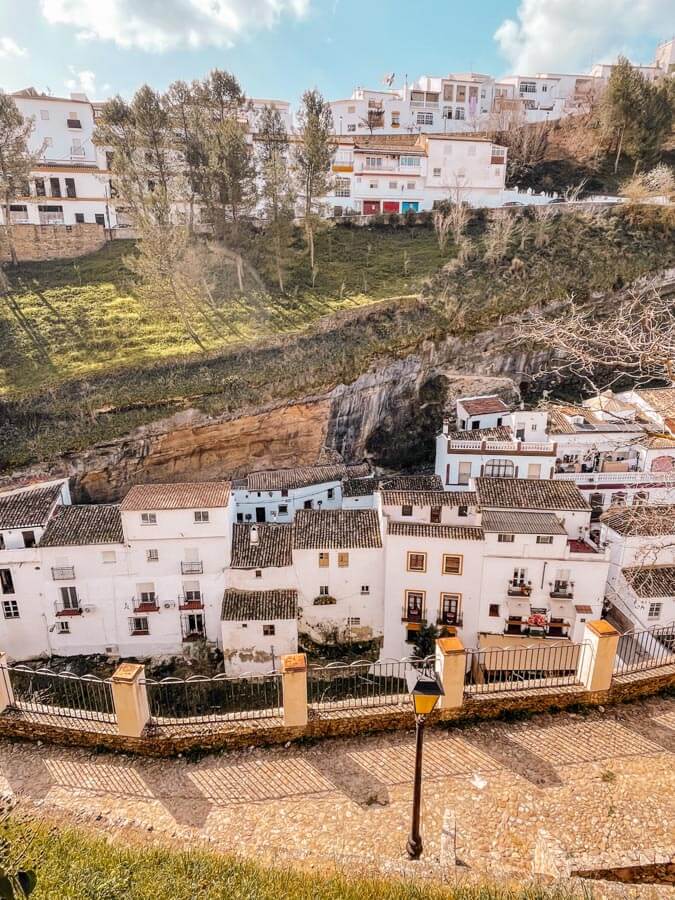
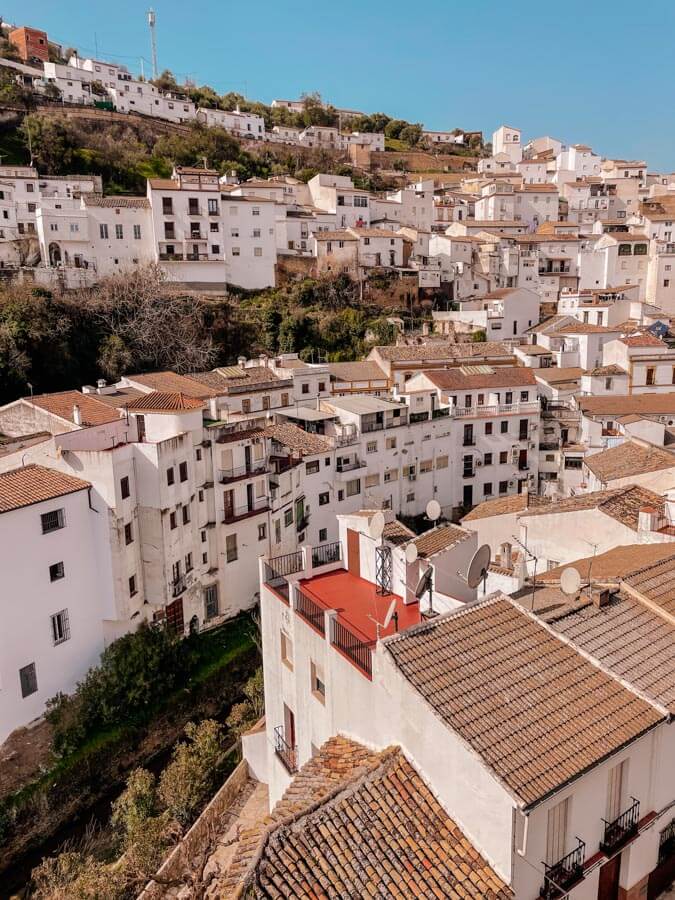
By Lucia from The Viva la Vita
If you find yourself exploring Southern Spain, you won’t really see what it’s all about until you go on a fascinating experience of visiting some of the prettiest ‘Pueblos Blancos’ – the whitewashed cobbled villages with a lot of rustic charm and a place where it feels like the time stood still.
They very much embody the essence of Andalusia and allow you to explore the authentic part of Spanish life, without crowds and bleached sunbeds on the beach.
The highlights of the Pueblo Blanco experience includes places like Frigiliana (voted a number of times the prettiest white village), Mijas Pueblo, Benalmadena Pueblo, Ronda, Vejer de la Frontera, Zahara de la Sierra, and the village built into a rock called Setenil de las Bodegas.
If you only have time for one or two of these, I would recommend Ronda and Setenil de las Bodegas, as they are very close to each other and are truly unique places to visit.
Exploring the white village of Southern Spain is suitable for the whole family, including kids. If you’re traveling with strollers, keep in mind many of these villages have old cobbled roads and a bit of challenging terrain, so you might want to use a baby carrier instead. Also avoid visiting them in the middle of the day in the highest heat, as they tend to involve climbing some uphills at some point.
24.) Seeing the Best of Andalusia on a Road Trip
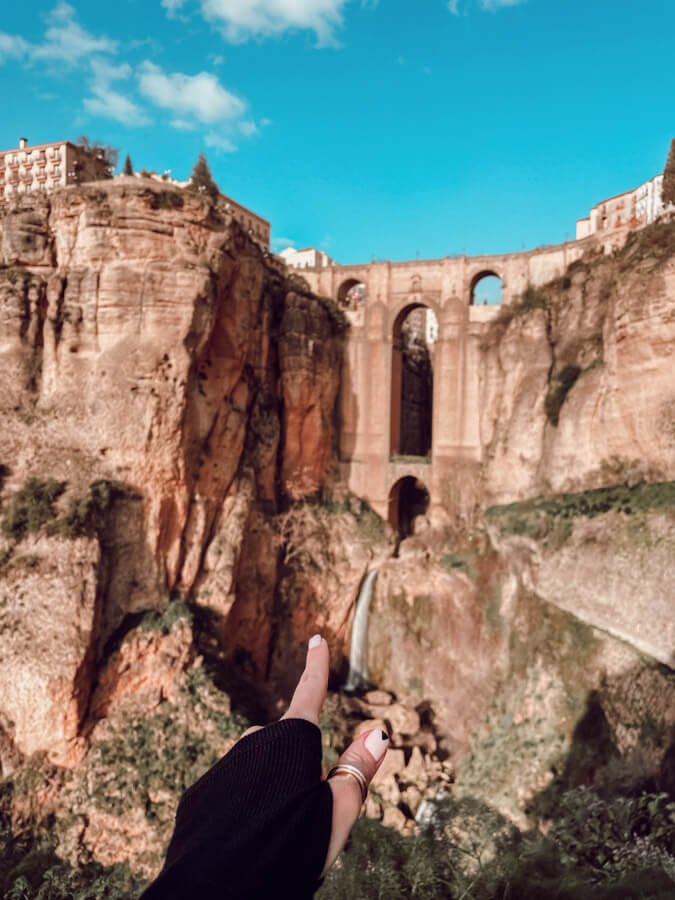
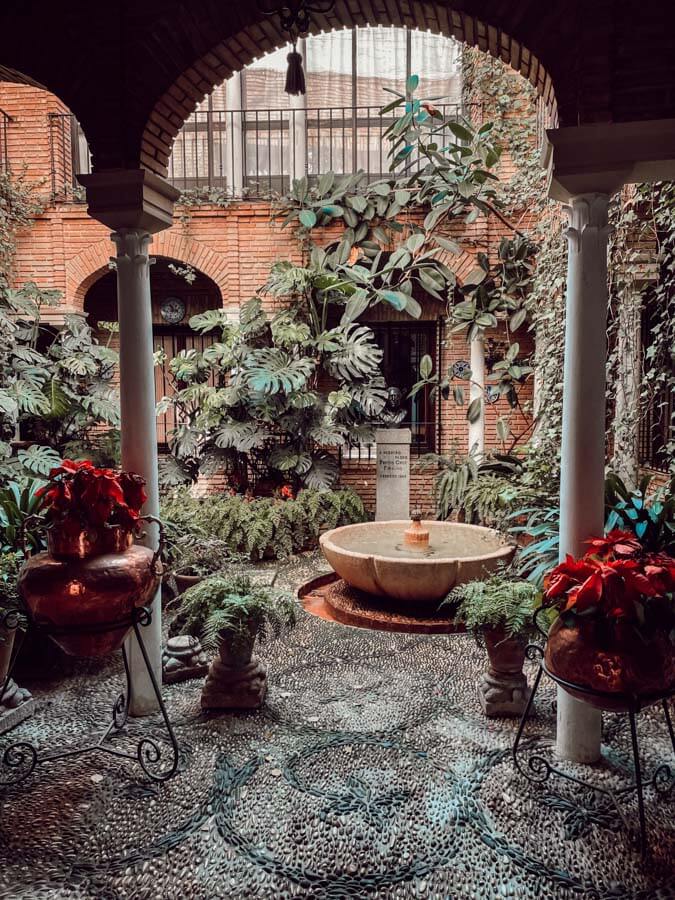
By Izzy from The Gap Decaders
If you’re looking for an authentic Spanish travel experience, then look no further than an off-the-beaten-path road trip of Andalucia, Spain’s quintessential southern commune.
Sure, you’ll hit the highlights, like the homage to love that is Granada’s Alhambra, flamenco dancing in steamy Seville, and the breathtaking Mezquita in Cordoba – and it would be criminal not to see these behemoths of Spanish architecture and history.
But the real climax of this trip is the stuff that most tourists don’t do between those famous cities. Instead of sitting on a coach or minibus taking a day trip, hire a car at Malaga airport and drive yourself through the olive groves and orange trees of Andalucia.
Make a stop in Ronda, which is surrounded by dramatic mountains, and has one of the best bullrings in the country. From here, you’re perfectly placed to explore the pueblo blancos – white villages – in the mountains of the Grazalema National Park. In fact, the lively village of Grazalema is a great place to start, especially when you stop for a long and leisurely lunch of local tapas and Cadiz wine at Casa Martin 1920.
For a spectacular drive from Ronda, head for Zahara de la Sierra and pick up the snaking ribbon of road that is the CA-9104, which climbs 1180 meters to crest the Puerto de Las Palomas (Pass of the Pigeons). Once you’ve admired the view, head west for the sherry cities of Jerez de la Frontera and Cadiz.
25.) Exploring Alhambra – One of the Best-preserved Palaces of the Historic Islamic World
Seeing the fabulous Alhambra Palace in Granada is a must-have Spanish experience for any visitor. This masterpiece architectural ensemble is one of the ten most visited attractions in Spain and one of the most significant and well-preserved examples of Islamic architecture in the world.
Alhambra is considered special for many reasons. Among the most famous ones are the distinctive architectural style, impressive gardens, and historical significance.
The architectural style is one of its kind in the entire world. It features intricate geometric patterns, intricate carvings, and beautiful tilework. The gardens with magnificent terraces, graceful arches, and wonderful fountains reflect very well the Islamic concept of paradise and are intended to evoke a sense of harmony and tranquility.
You need to remember that Alhambra was built during the Nasrid dynasty in the 14th century and served as a royal palace for the Muslim rulers of the Granada Kingdom at that time. But soon enough the complex was occupied by Christian conquerors, who added their own touches to the architecture.
Thus two unique blends of Islamic and Christian influences started to shape and characterize the region’s history, inspiring many artists, writers, and poets over the centuries and finally becoming an important symbol of Islamic culture and history. During our days, Alhambra became UNESCO World Heritage Site and started to attract millions of visitors every year.
It is not just a place where to take beautiful photos but a place where to plunge into several different cultures at the same time by touching the history of Spain. Learn about the saga of the struggle of Christians with the Moors and see with your own eyes the last Moorish bastion which left a trace on the old days affecting the future.
Just make sure to plan your trip to Alhambra in advance as there are daily limits on visits.
26.) Grasping the Beauty of Real Alcazar – the Oldest Royal Palace in Use in Europe
By Amber from Amber Everywhere
One of the reasons to travel to Spain is to be able to see the oldest Royal Palace (which is still in use) Alcazar, located in the center of Seville.
It is a palace and UNESCO World Heritage site originally built in the 10th century A.D. The Real Alcazar deserves a spot on any world traveler’s bucket list, especially if you enjoy learning about Spanish architecture and history. The palace is also very beautiful, and it was a filming location for the hit TV show Game of Thrones.
The Real Alcazar has an interesting architectural history, which combines structural elements of Romanesque, Gothic, and Renaissance styles.
Because the palace was rebuilt and set on top of itself for so many centuries, you’ll find relics of and insights into Andalusian life over the course of nearly a thousand years.
If you’re interested in architecture and want to make the most of your visit, read about the Mudéjar style before you go so that you can look for examples while you explore the grounds.
After you’ve finished exploring the palace, you can wander the grounds of the adjoining gardens and watch peacocks lazily stroll along the paths. This activity is appropriate for families, and you’ll want to pack comfortable shoes, clothes appropriate for the weather, and plenty of water if you visit in the warmer months.
To help you plan a visit to Alcazar in Seville, refer to its official website.
27.) Hiking to the Smallest White Village in Spain
By Victoria from Guide Your Travel
Visiting a white village (as mentioned above) is a unique experience on its own. But going on a hike to it from the nearby town will offer a unique way of discovery.
Acebuchal, as the smallest white village in Spain, is often called the lost village and its remote location in the mountains of Andalucia makes it a true hidden gem.
The village lay abandoned for over 40 years and has now become a fantastic hiking destination. It lies around a 2-hour walk from Frigiliana (the most touristy white town), which is located east of Malaga.
You can also drive to Acebuchal if you’re not ready to commit to the walk, although it’s a fantastic way to spend an afternoon, especially during the summer.
Acebuchal has a handful of small hotels and a popular restaurant that serves freshly baked bread and incredible local cuisine, including jamon serrano and pickled olives. Make sure to come early so you can still get a stop, especially on weekends. Despite the restaurant’s popularity, Acebuchal keeps its charm and offers a lot to visitors.
When in the village, stop by the historic church and explore the nearby hiking paths which provide fantastic views of the surrounding landscape. Don’t forget to hike back with plenty of time to spare before it gets dark.
28.) Visiting Some of the World-Class Museums in Madrid
By Dhara of It’s Not About the Miles
If you appreciate all things European art, then visiting Madrid’s Golden Triangle with a triad of art museums that will delight you with their treasures is an absolute bucket list experience in Spain. The art of the Golden Triangle is not only wonderful to view, but the Spanish collections offer a window into the country’s rich history and culture as well.
The Museo Nacional del Prado, known simply as El Prado, is arguably the most famous art museum in all of Spain. Its collection of Spanish art is unrivaled and among the more than 7,500 paintings here, you will find the works of the likes of Goya, El Greco, Velazquez, and Zurbaran. You’ll also find famous works from other European masters, such as Rembrandt, Rubens, Botticelli, and Titian. The Prado can keep lovers of traditional European art enthralled for hours and hours.
At the other end of the spectrum, the Reina Sofia Museum is dedicated mainly to 20th-century Spanish art, with significant collections of the works of Pablo Picasso and Salvador Dali, among others. Here you can gaze at Picasso’s Guernica, considered one of his most iconic works.
The Thyssen-Bornemisza National Museum rounds out the trinity. It houses a mix of both traditional and modern and includes some North American works as well as Impressionist and Post-Impressionist works missing in the other two museums.
If you enjoy art, be sure to allow plenty of time to visit these three museum gems in Madrid, no matter if you are staying in Madrid for 10 days, a week on a quick weekend getaway.
It is better to plan a visit for a weekday or early morning to avoid crowds and be able to get tickets.
29.) Glimpsing at the World’s Best Examples of Early Modernist Architecture in Barcelona
By Kristin from Global Travel Escapades
I want to complete this list of must-have travel experiences in Spain with a very famous and important activity intrinsic to Barcelona. And that is seeing Gaudi’s Works in this grand city.
If you’re considering Barcelona as a base point, then add a visit to Gaudi’s many works of art that are scattered across different corners. It is an absolute not to miss thing to do that’s great for solo travelers, couples, and even families with kids.
The most famous and popular piece is Gaudi’s innovative La Sagrada Familia. It’s the largest unfinished church in the world and is globally recognized as a symbol of the city.
Meanwhile, the beautiful Park Güell sits on top of the hillside and is full of vibrant colors and whimsical sculptures. It represents the spirit of Catalonia and rewards guests who visit with sweeping panoramic views of Barcelona’s scenic skyline.
Another piece is Casa Batlló, which features a facade that reveals an explosion of colors and is the physical embodiment of one of Catalonia’s ancient legends. And then of course La Colonia Guell in the northern part of the city which is best to visit on the Barcelona to Andorra road trip.
Ultimately, Gaudi is one of the most important artists to come from Spain. His designs allow visitors to immerse themselves in the vibrant Catalan culture that is common to Northeastern Spain, the nearby principality of Andorra, and other surrounding regions.
Thus, if you want to experience the best of Spain, be sure to spend some time exploring and touring Gaudi’s works of art in Barcelona!
More Posts About Spain Experiences
- Cool road trips from Madrid – to explore central Spain
- What to Wear in Spain – tips for all seasons to have the best experience
- Valencia to Malaga road trip – seeing the southern coast of Spain from a new perspective
